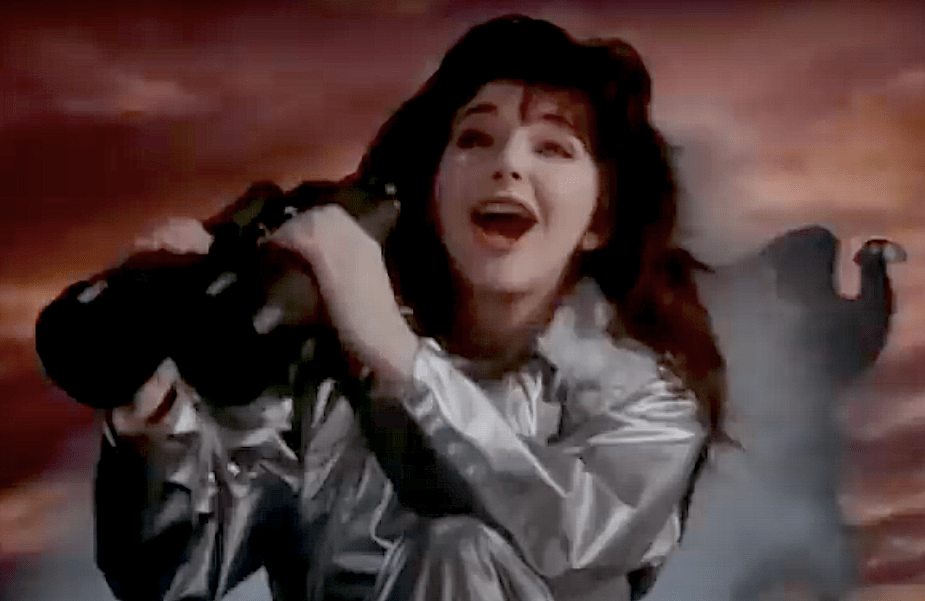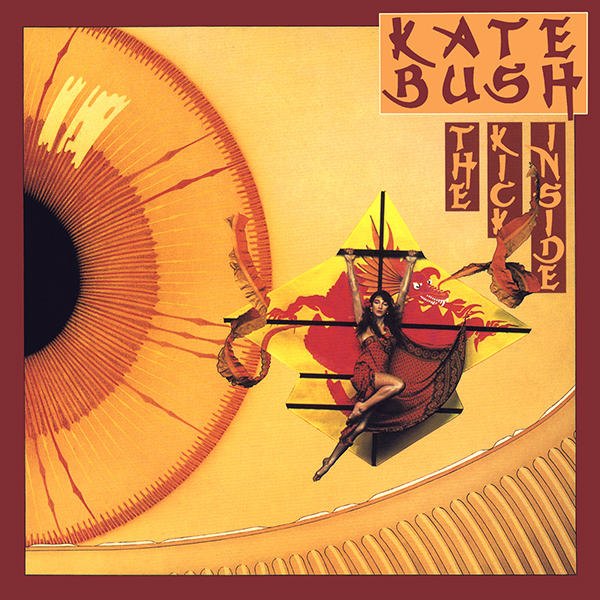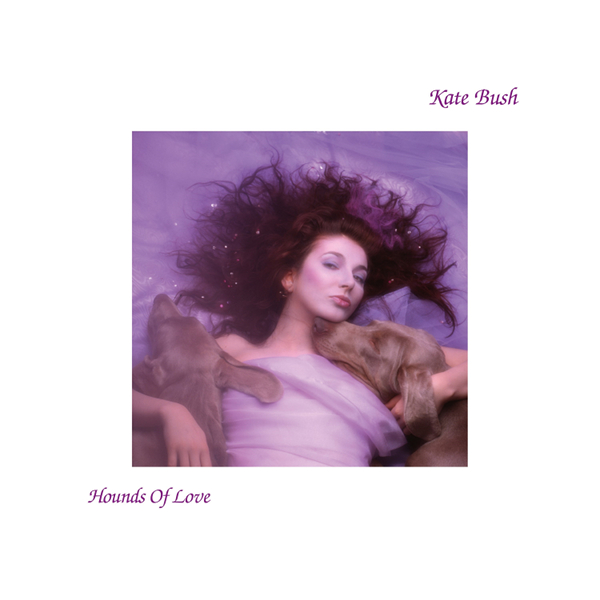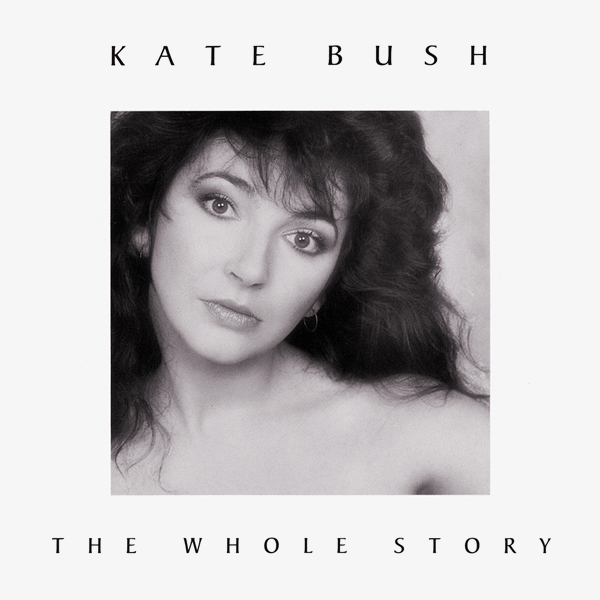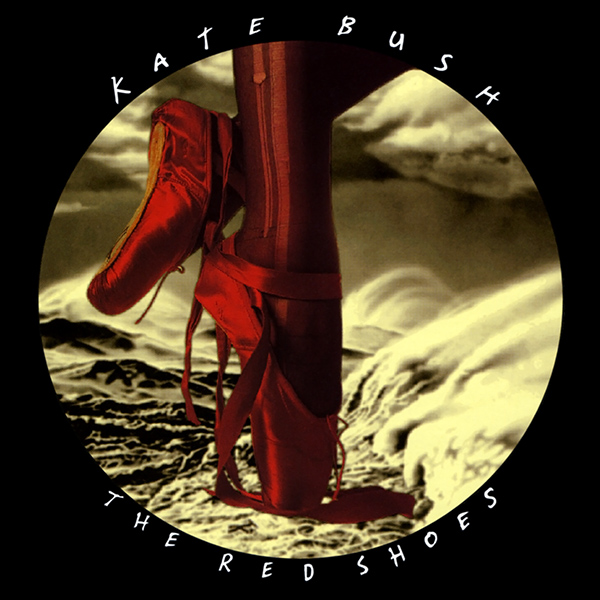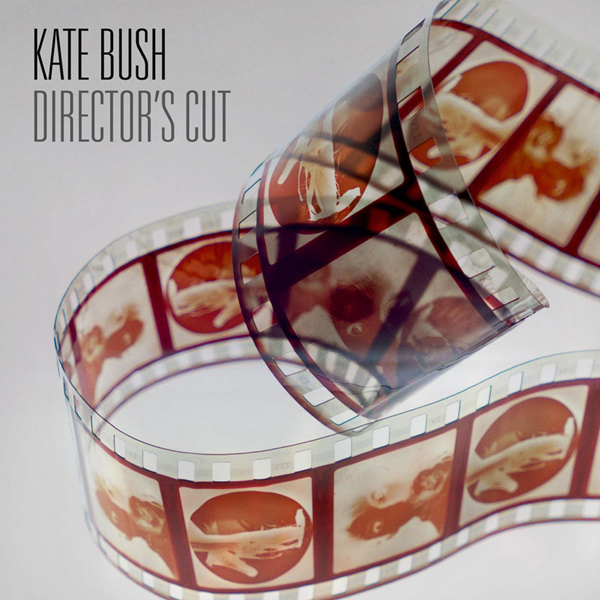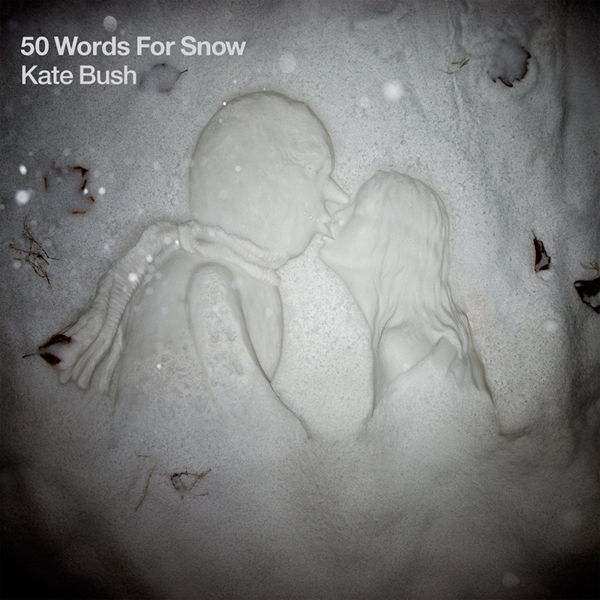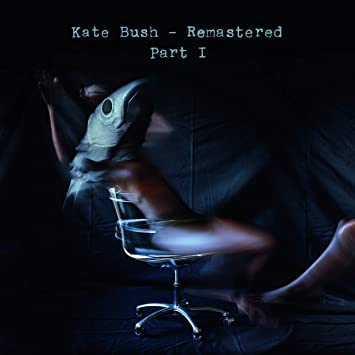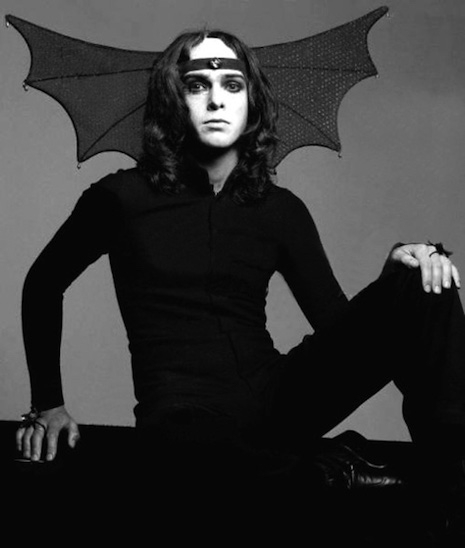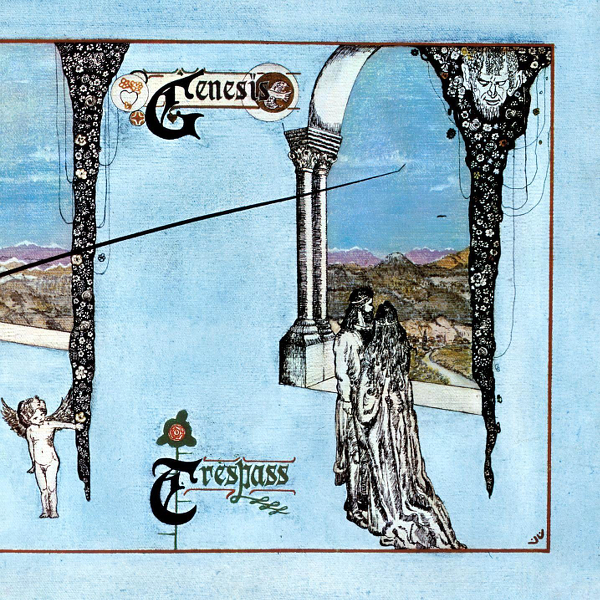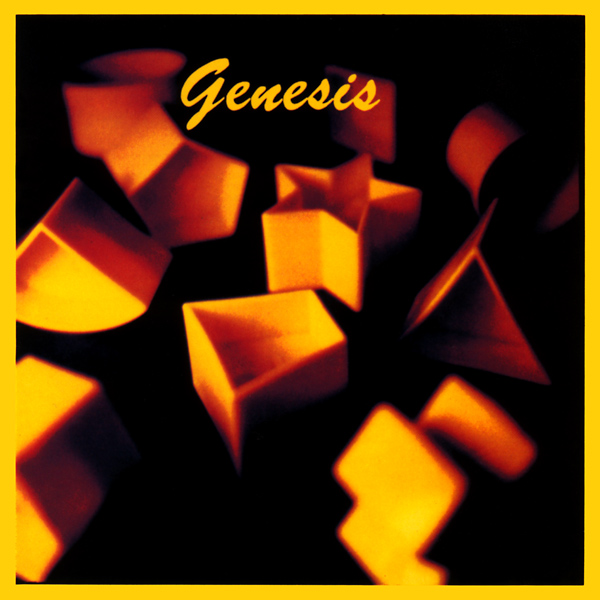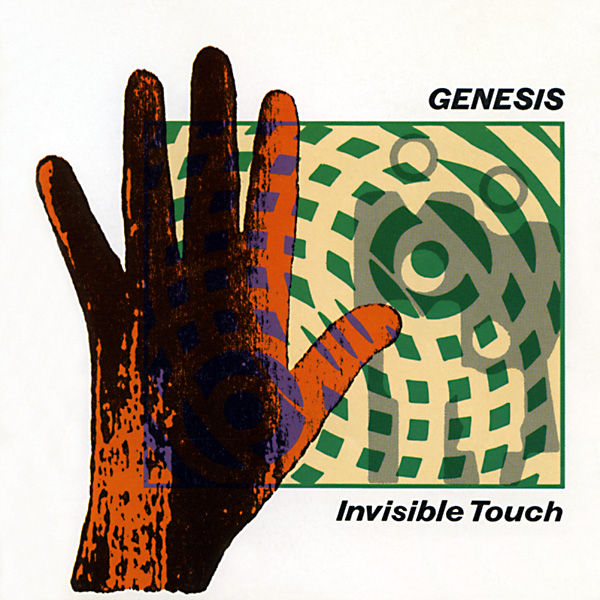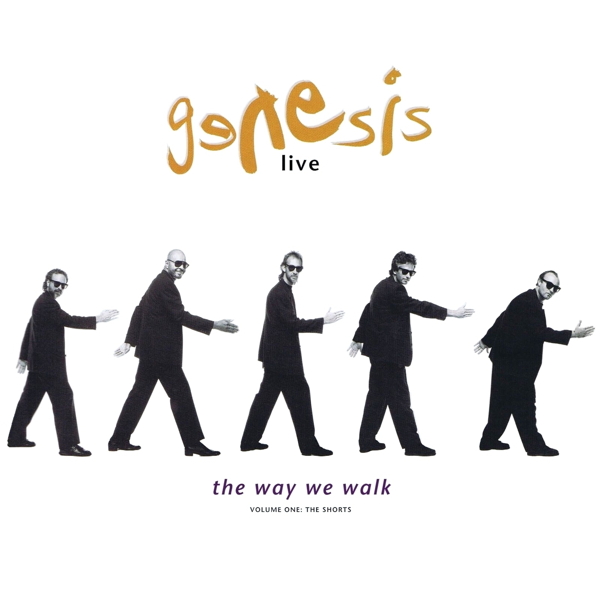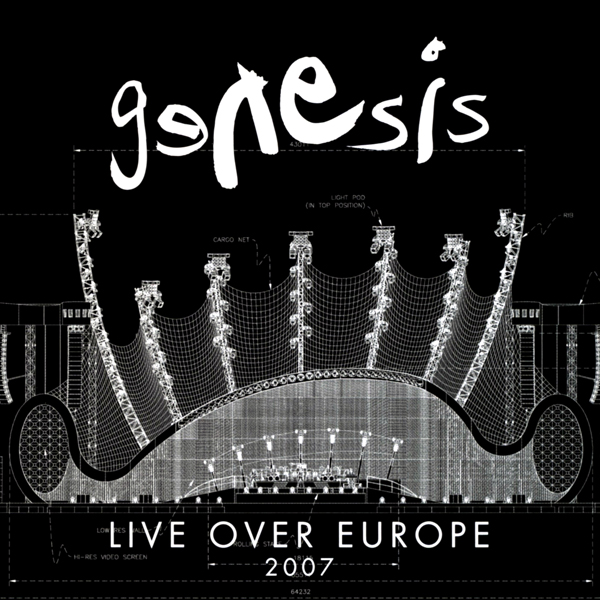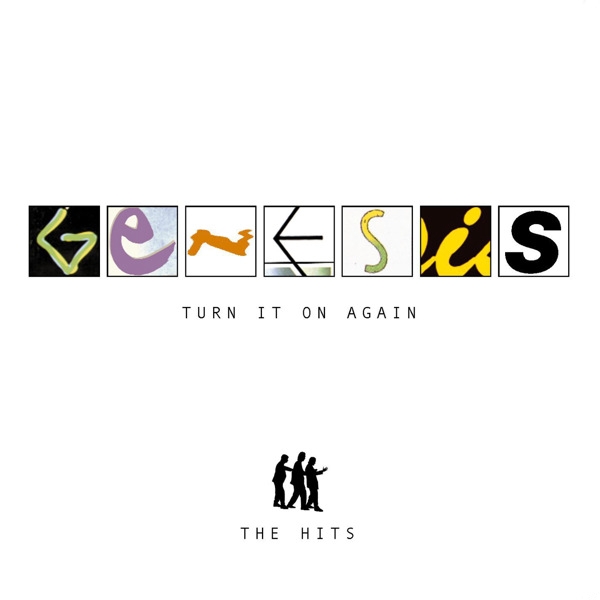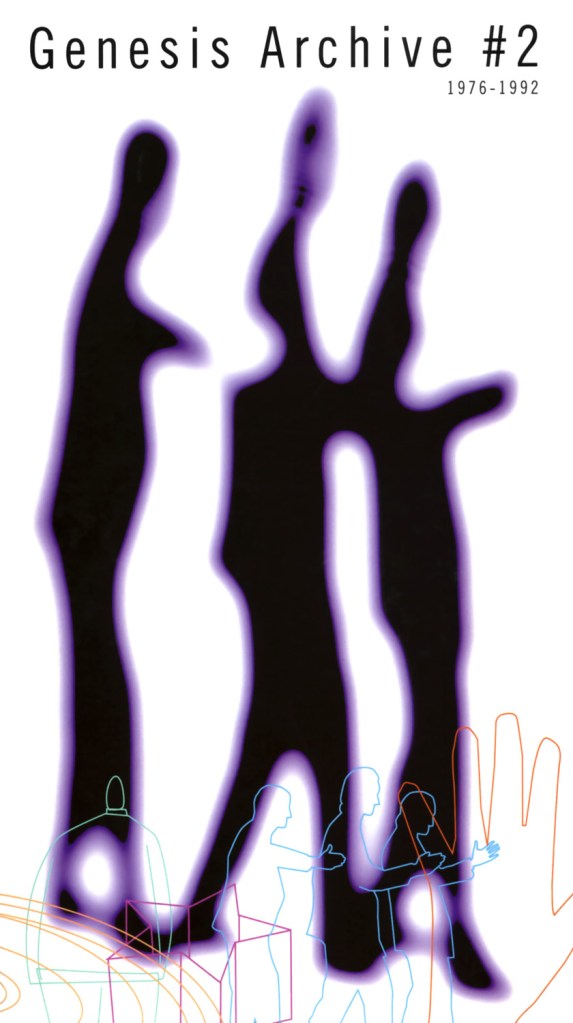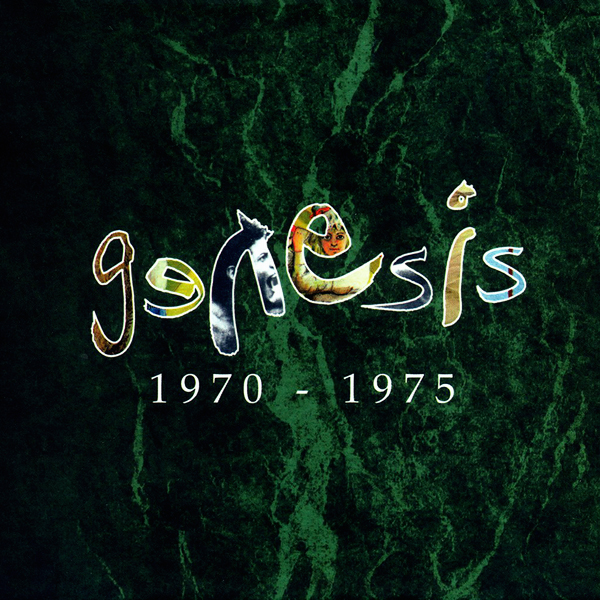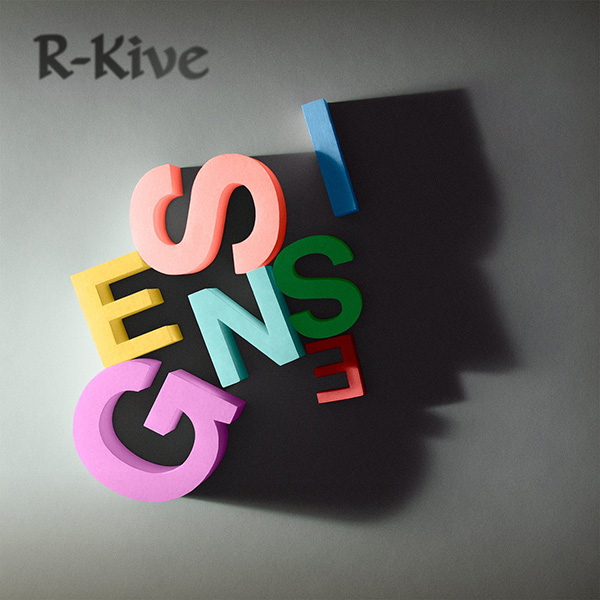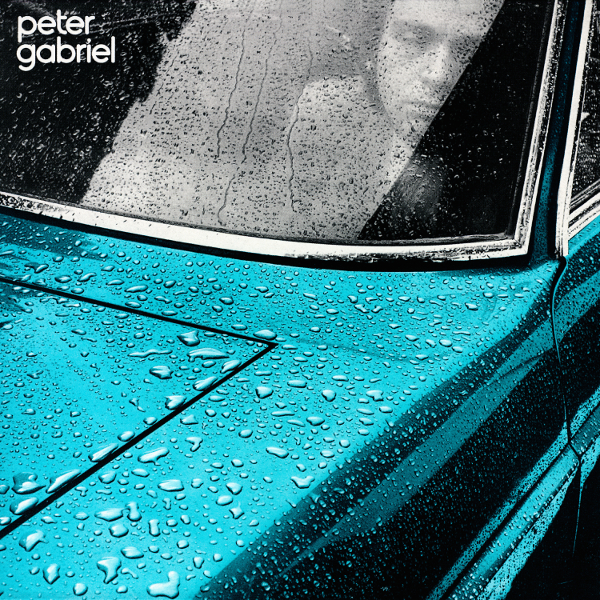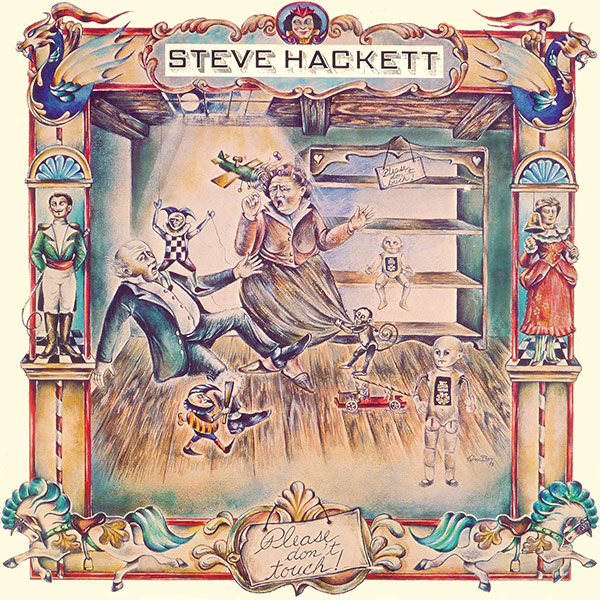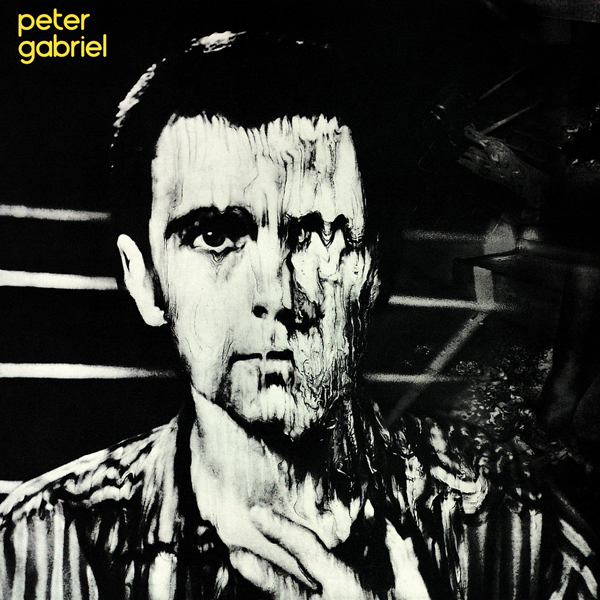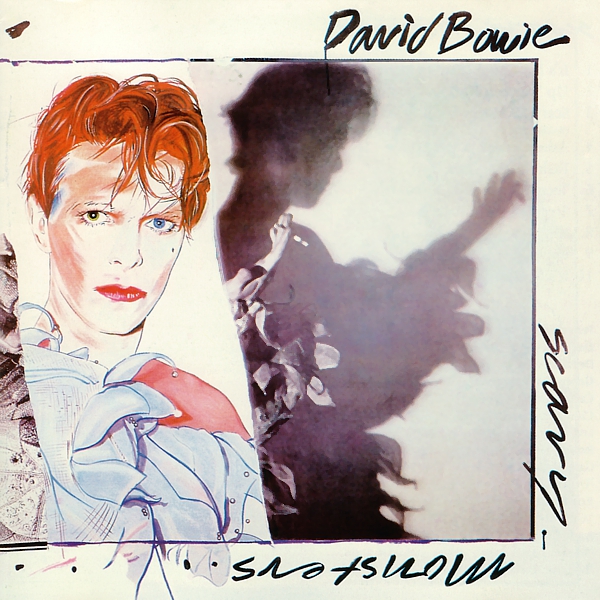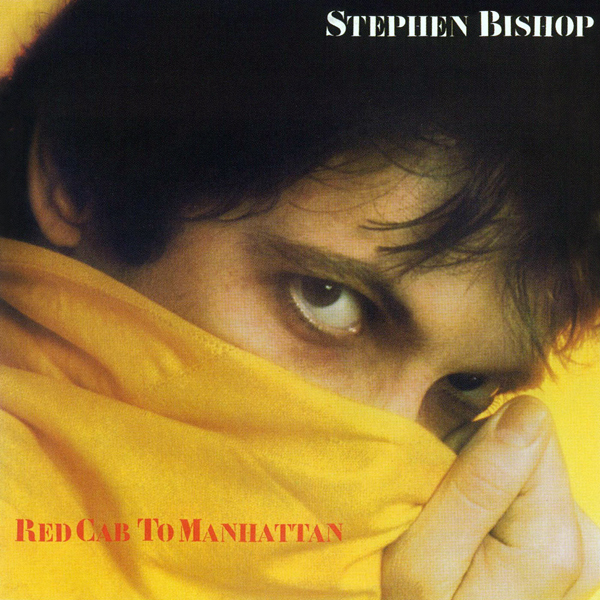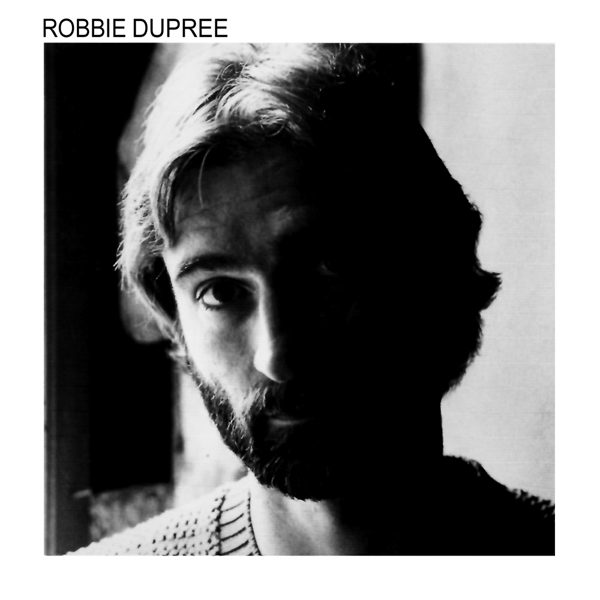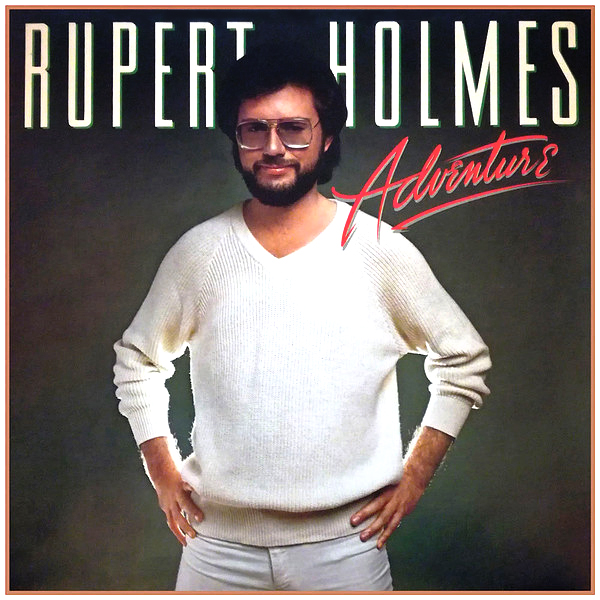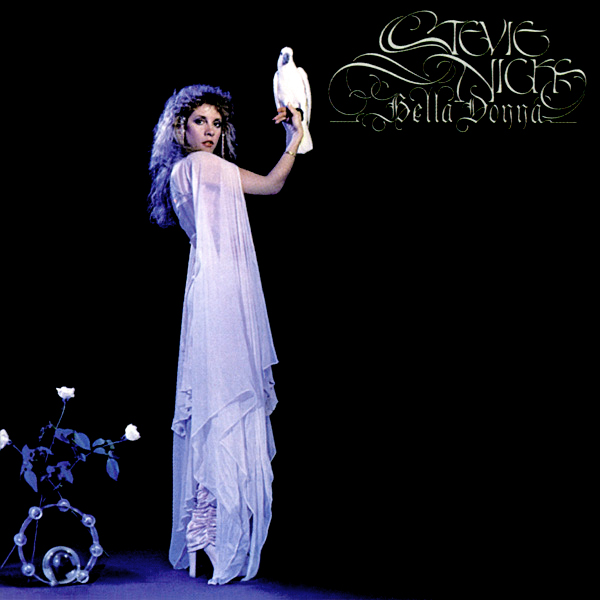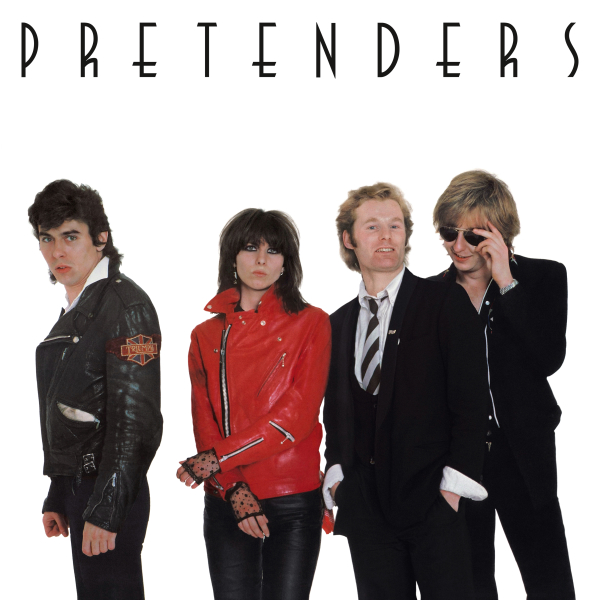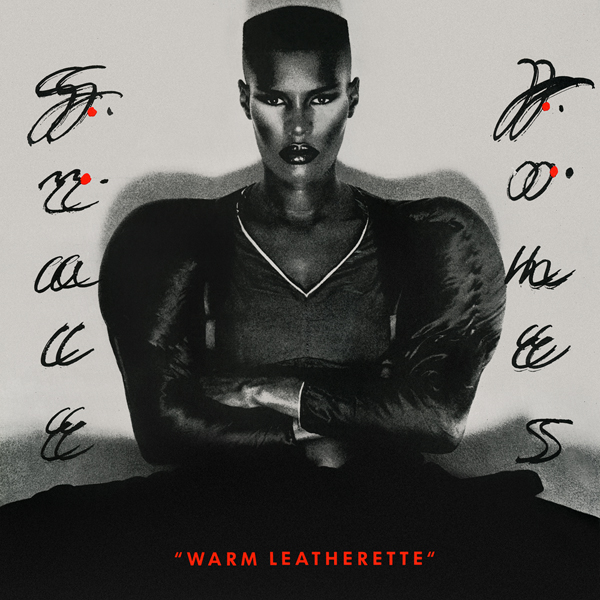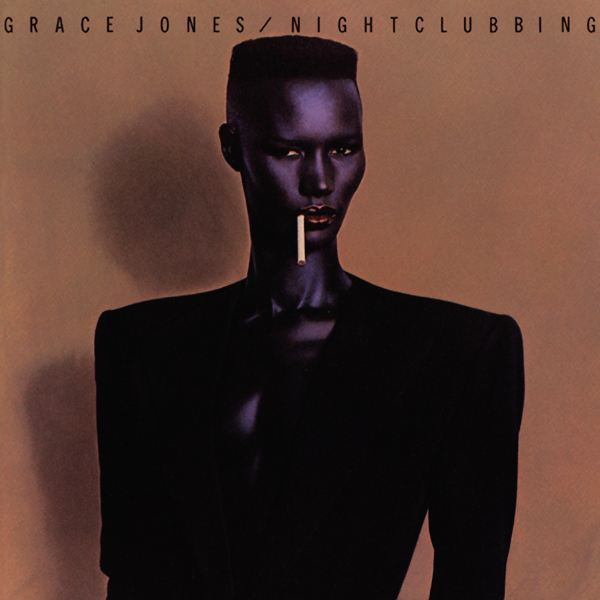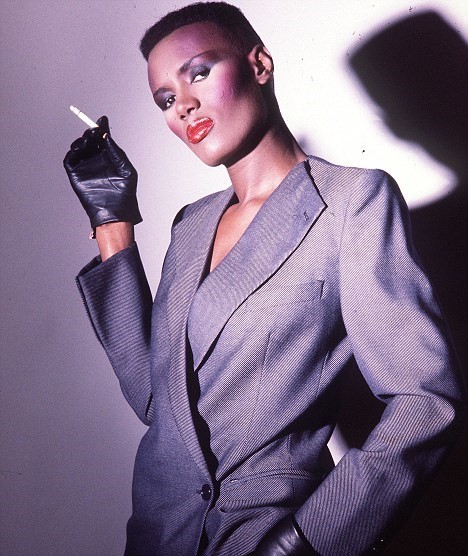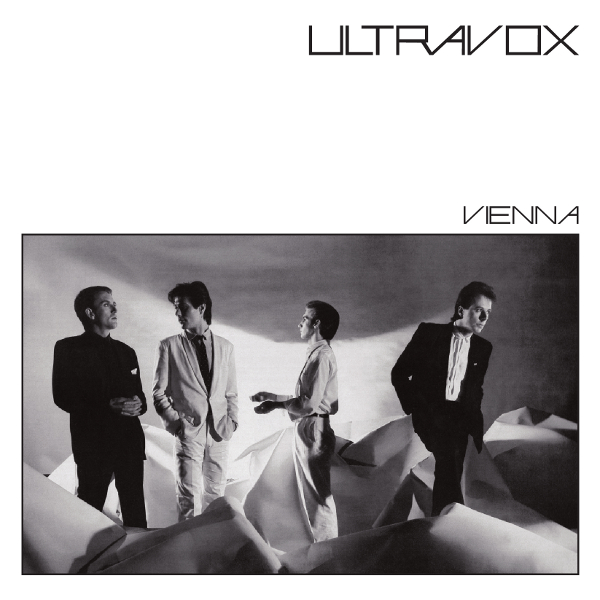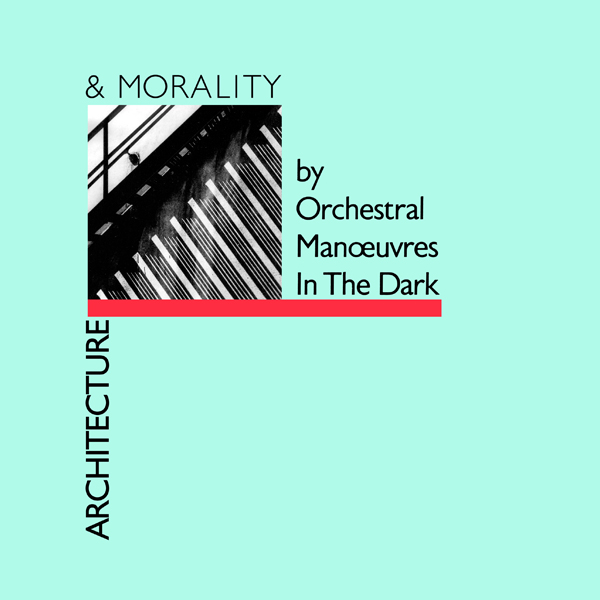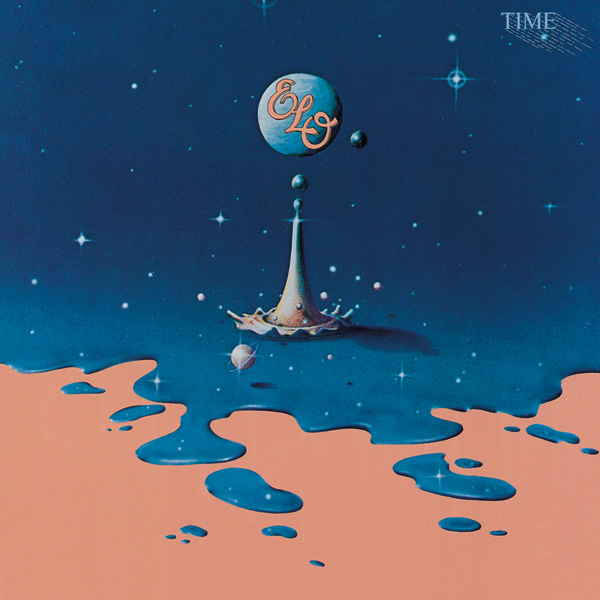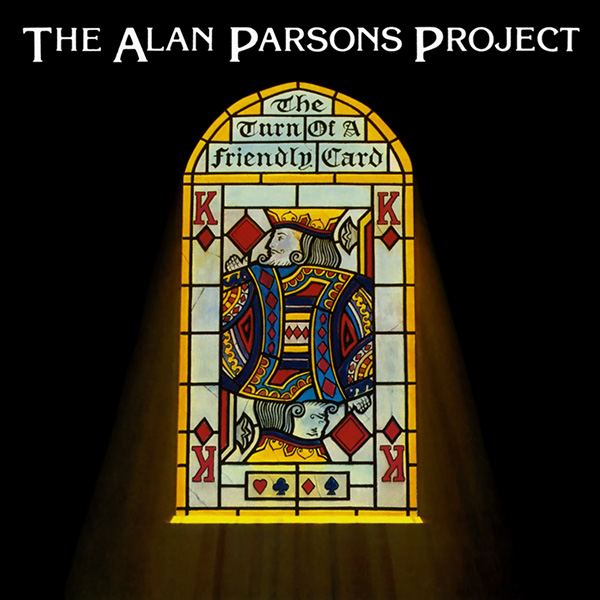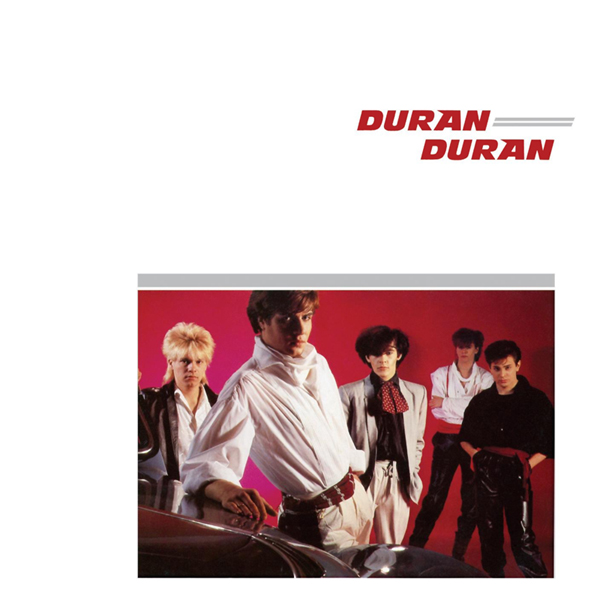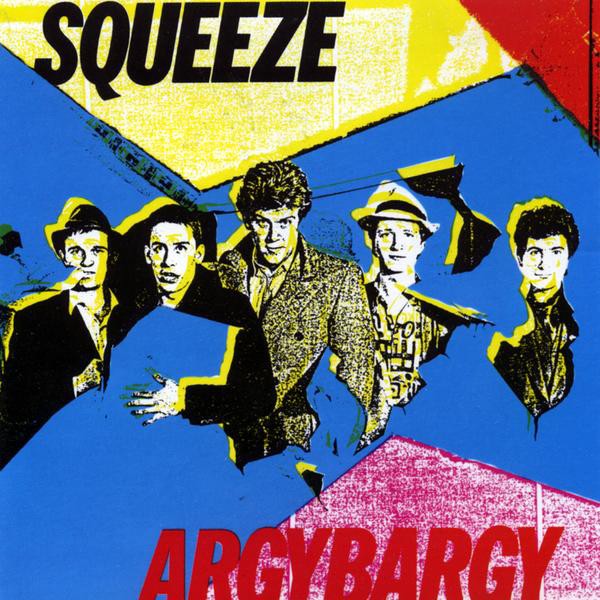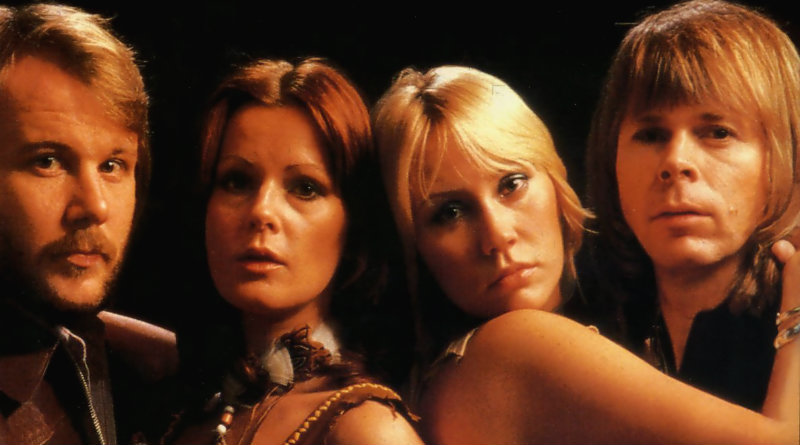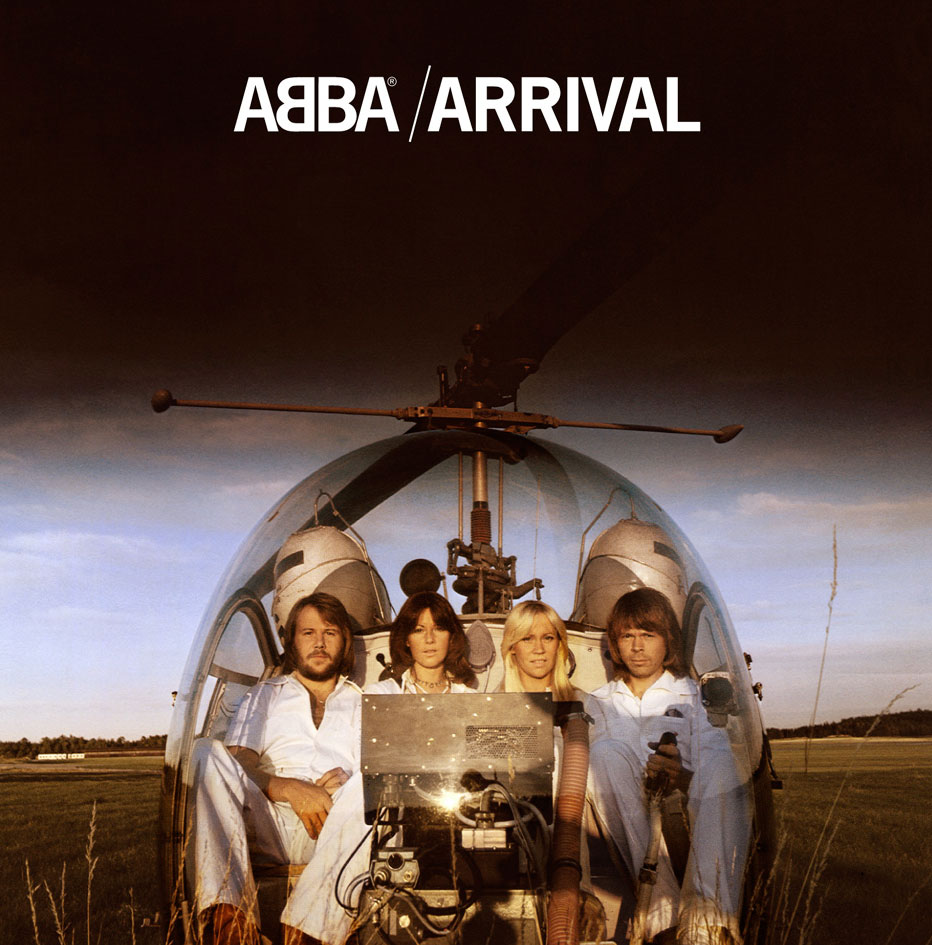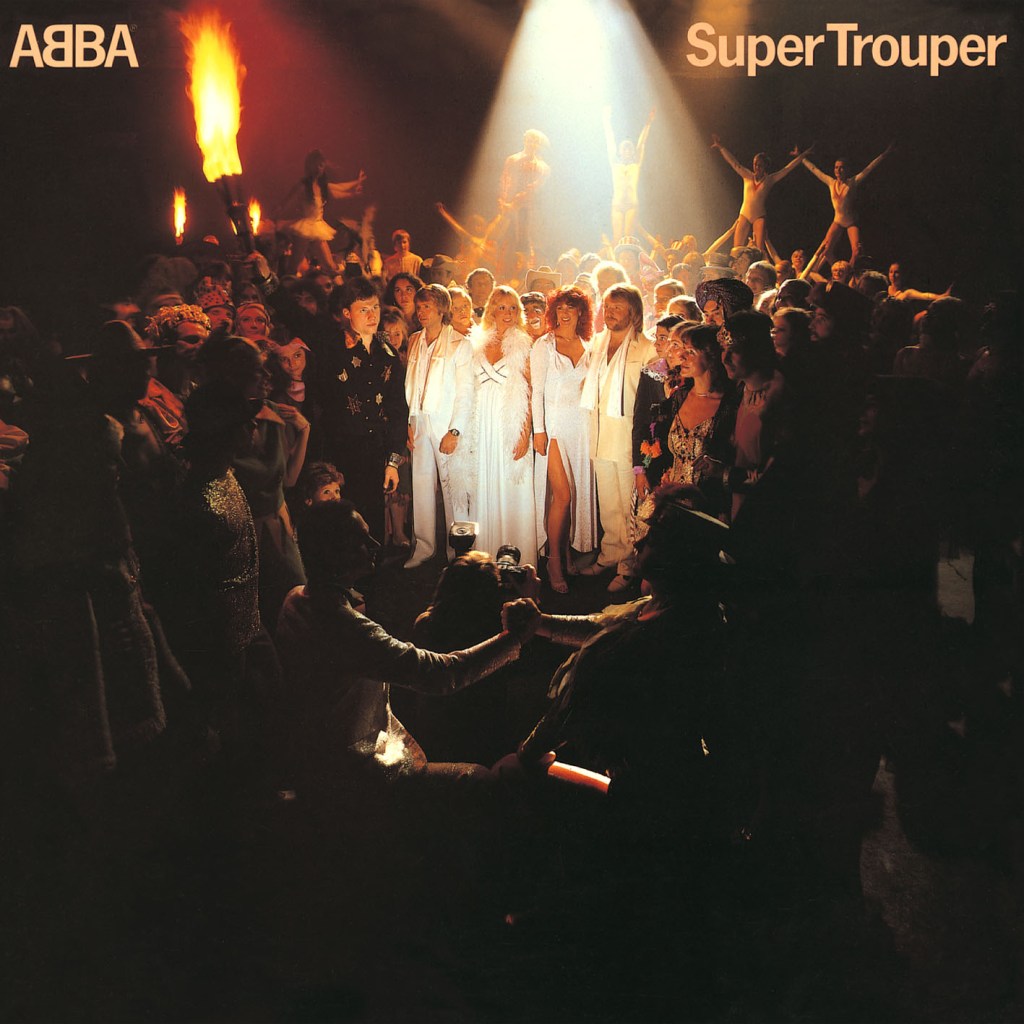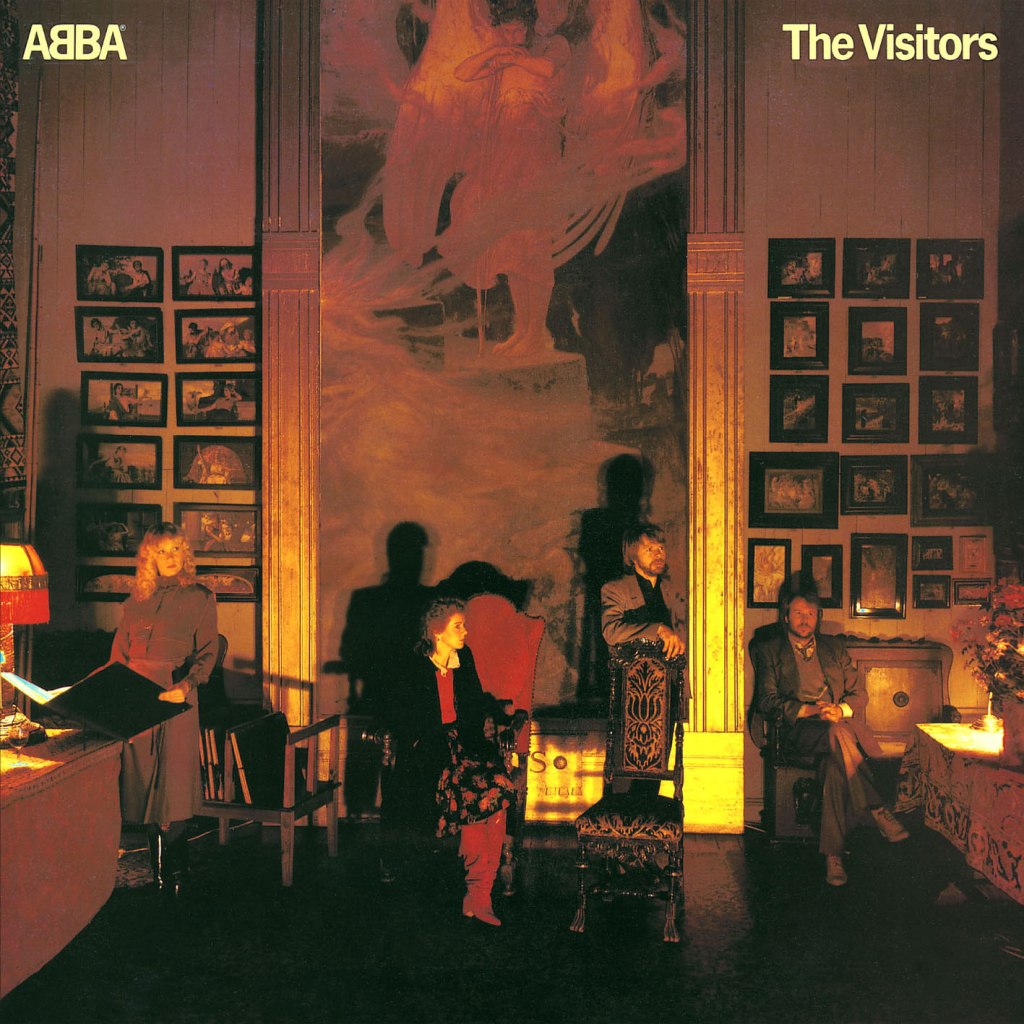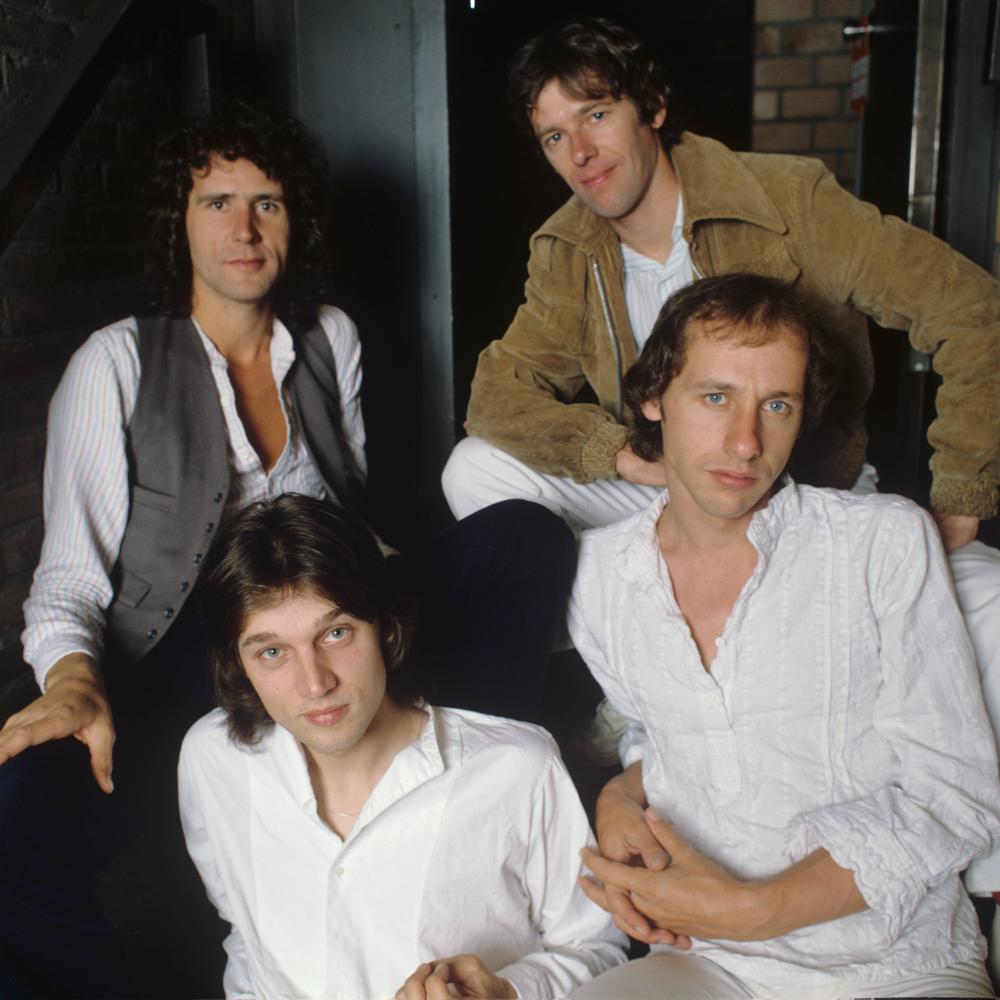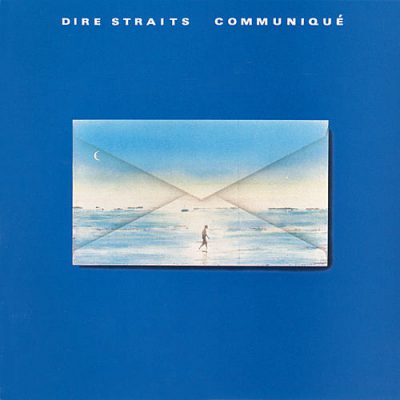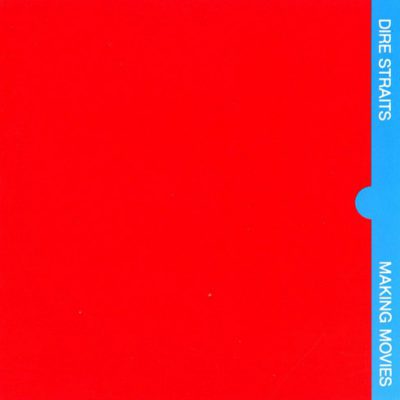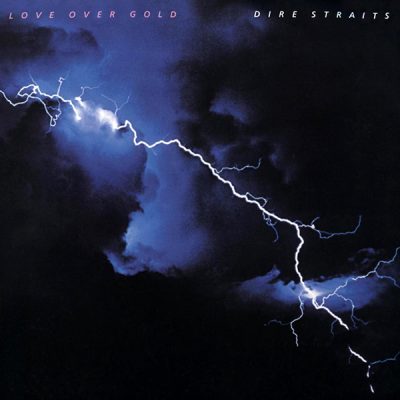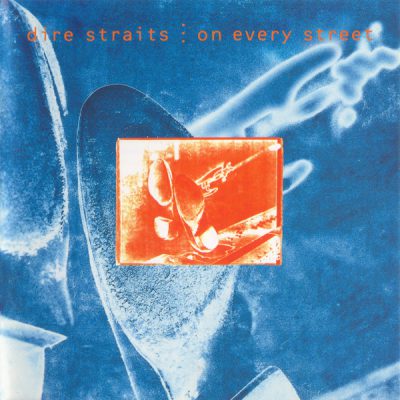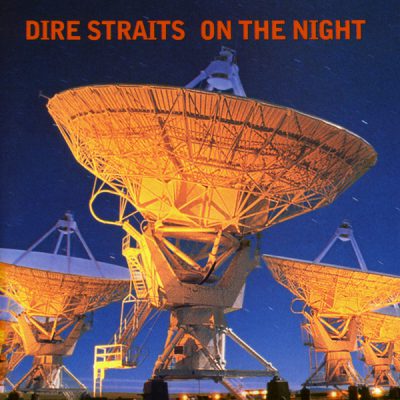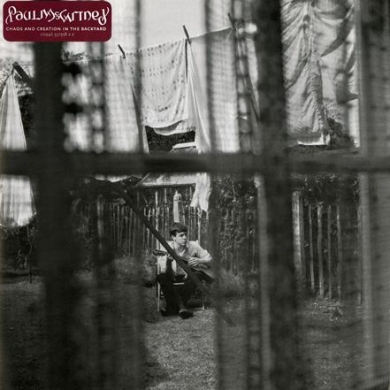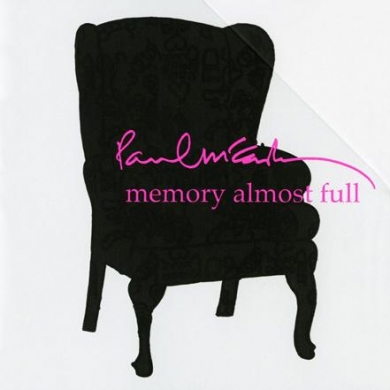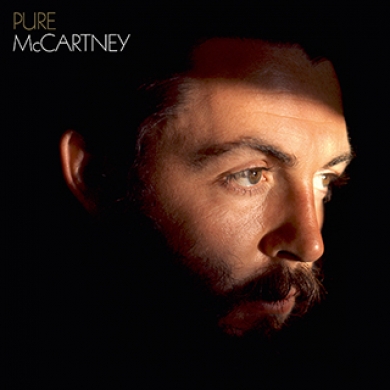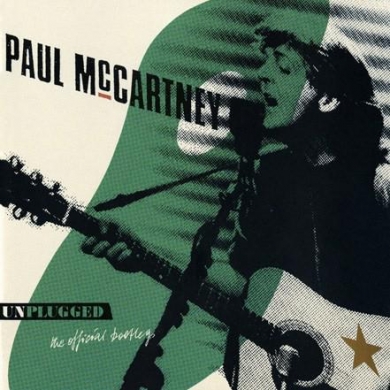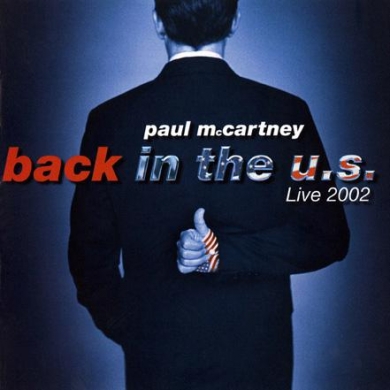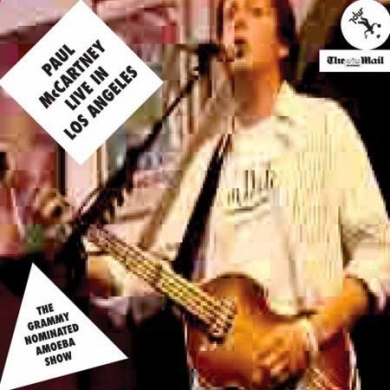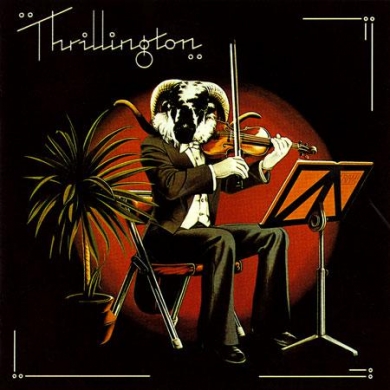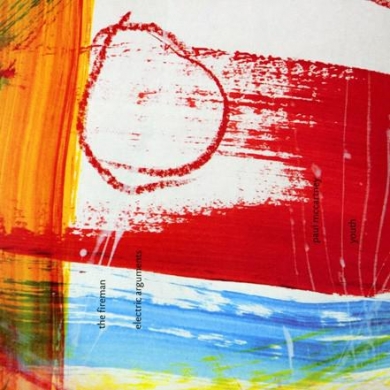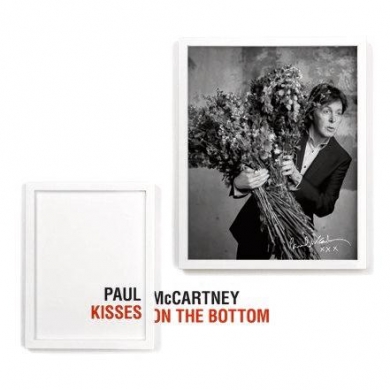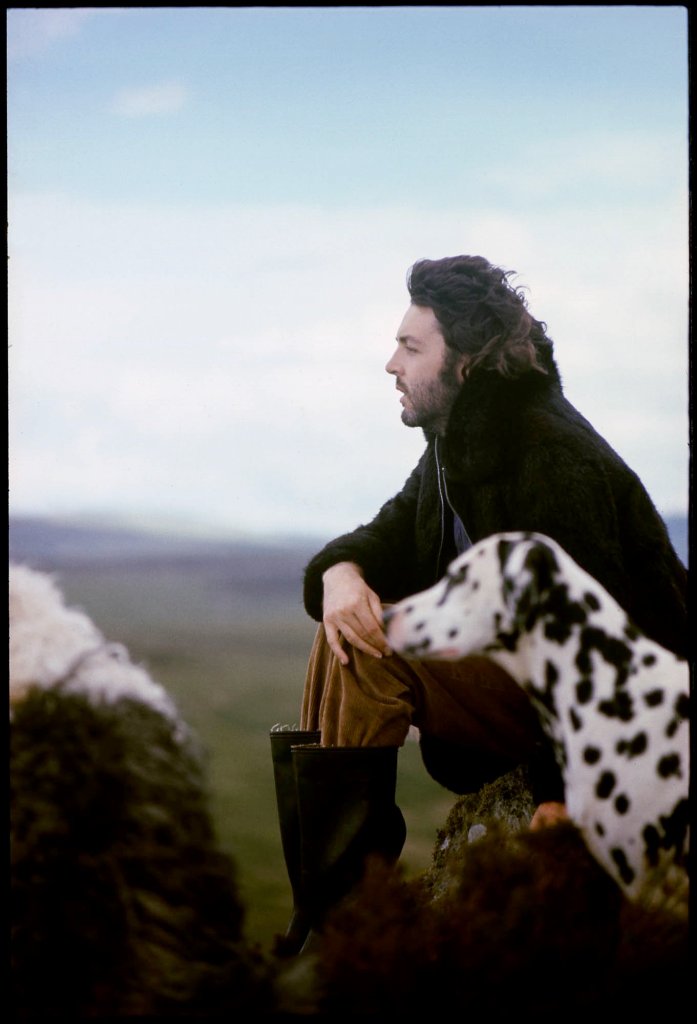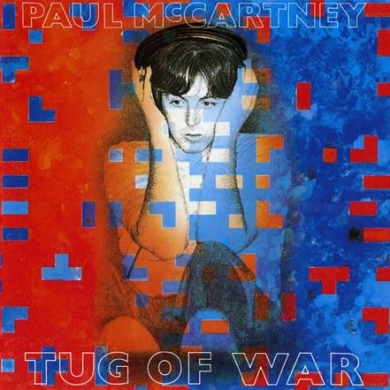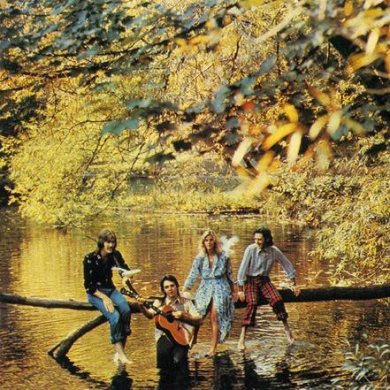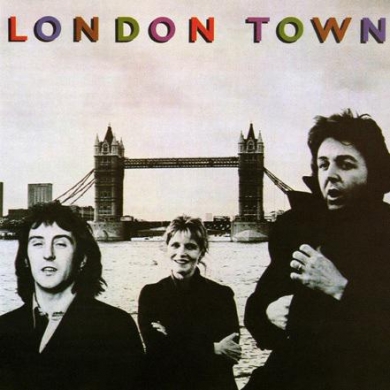
While Kenny Loggins’s biggest hits were songs that featured on soundtracks, at his core, he was always an “Albums Guy”. It’s time to talk about the real Loggins and give his full-length solo discography the undivided attention and demented analysis it deserves. The waiting is over…
By the end of 1976, after five years as a performing duo, soft rock troubadours Kenny Loggins & Jim Messina decided to end their musical partnership. It’d been a great run that saw them score no fewer than five platinum albums, two Gold albums, and a top ten pop hit with the somewhat polarizing “Your Mama Don’t Dance” ( the “Wake Me Up Before You Go-Go” of its day). Loggins explained the situation in classic rock-speak soon after, stating that things were starting to feel “too comfortable”, and that the duo needed to break up for “creative reasons” adding that the decision to split “was mutual”. More light was shed on the precise cause in Loggins’s 2022 memoir Still Alright.
In it, Messina is portrayed as a good-intentioned control freak, who dominates nearly all the behind-the-scenes activity. He produced. He arranged. He curated a lot of the songs the two ultimately recorded. He had the final word on all musical decisions. But the key bone of contention that led to their breakup was that evergreen classic bastard; “musical differences”. Messina wanted the two to head in a more rootsy country-rock direction while Loggins was yearning to incorporate more R&B-ish textures into their oeuvre. And so, just like ye olde writer and poet Rudyard Kipling once said “and never the twain shall meet”. The duo split, and in our year of 1977 the solo career of soft-rockin’ bearded bard and foxy troubadour Kenny Loggins, heretofore to be referred to as KL, began.
While KL’s aforementioned 2022 memoir Still Alright (co-authored with writer Jason Turbow) is just that, a mostly linear description of his life to date, it’s also about his lifelong journey to understand himself. I know that sounds like self-indulgent bullshit but while there are some distinctly Californian new-age stylings sprinkled within the book—there is a scene involving the utilization of crystals whilst sitting in a stick-drawn circle on a beach at night tripping on mushrooms for example— KL is so earnest and sincere in his delivery, so heartfelt and genuine when relating his epiphanic anecdotes that it’s hard to be critical without feeling like a judgemental asshole.

All that said, the main thing to know about Still Alright is this; if you’re looking for a deeply detailed dive into each of KL’s albums, you won’t find it in this book. His music is discussed selectively and the book focuses more on specific successes and lowlights as opposed to extensive album-by-album breakdowns and discussions of how the deep cuts came to be. And honestly, who would want to read about the genesis of the lesser-known tracks and non-singles like say the lustrous “Set It Free” or eerie, erotic epic “Angelique” and hear what KL thinks about them specifically? Okay, that was a trick question because the truth is, I totally wanted to know that stuff and was genuinely disappointed not to find it because I’m a nerd.
In Sinead O’Connor’s eminently readable 2022 memoir Rememberings, there was an entire chapter devoted to her discography, where she offered brief breakdowns of each of her albums. And her descriptions weren’t all sunshine, rainbows, and “I loved working with everyone”. While there were releases she was genuinely proud of, there were also a few she confessed to disliking. And while she spent several paragraphs tearing apart a song I’d always kind of liked, it was still totally fascinating to hear what she thought about the contents of each album. In fact, that whole chapter reinvigorated my interest in a few LPs I hadn’t listened to for a while. It also made me think about KL’s lack of a discographic diary within his book and how great it would’ve been to hear him do the same.
Love Will Follow: This essay isn’t a scholarly dissertation or a detailed history of KL’s career. It’s just a sloppily emotional dissection of the solo discography, warts, and all by a lifelong Loggins-head (like you maybe) who likes to read this kind of stuff. We’re just here to have a fun, overly-opinionated, long-winded time and, okay gonna do it, apologies in advance, cut footloose. Yeah, I just did that.
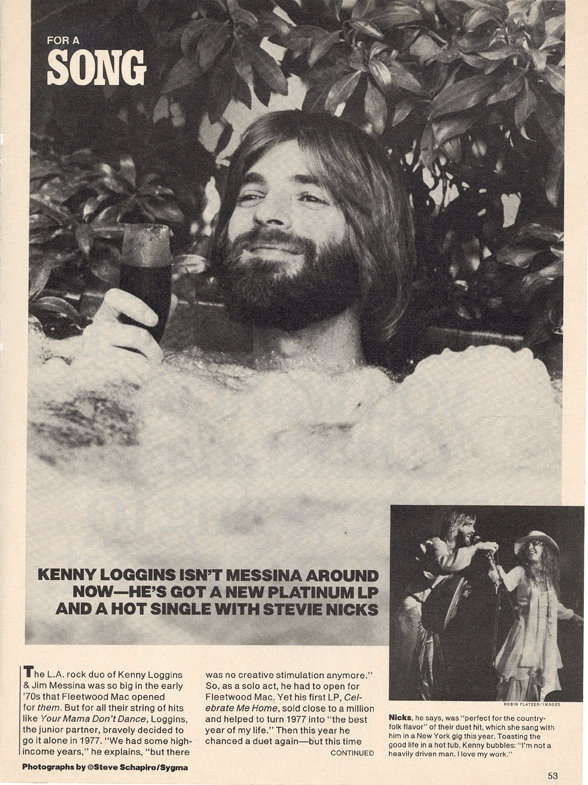
Here is a 1978 article from People magazine about KL’s first solo triumph. That is one shady headline there. Someone wasn’t Messina around.
Swear Your Love: It wasn’t a song that inspired me to buy my first Kenny Loggins album as a 13-year-old in 1978; it was the picture on the front cover. To be more specific, it was the beard.
The previous summer I had become infatuated with an adult neighbor who also had a beard which in turn triggered a brief fascination with men who had them. Can a child have a fetish? In my experience, I’m gonna have to say…yes (please don’t fear, I can explain, read this). Anyway, while I knew of Loggins & Messina (aka L & M) and had heard “Your Mama Don’t Dance” on the radio, I could not have been less interested in them. But then, children were not L & M’s core demographic. L & M were for big sisters and teenage cousins. They were for the burn-out/dirtbag adjacent girls that babysat my brother and I (as were America, Seals & Crofts, and Dan Fogelberg). L & M looked like guys who drove VW vans, called their girlfriends “babe” and never went anywhere without a loyal leashless dog trailing behind them. They didn’t “rock”, not like my beloved ELO or Boston, whose logos could be easily recreated on a school notebook. They were for “old” people.
Yet, there I was in the mediocre record store one town over in 1978 forking over precious allowance money to buy a record by this Loggins guy I wasn’t even sure I would freakin’ like…all because his picture on the cover reminded me of my bearded real-life crush.
Who’s Right, Who’s Wrong: Before I began this discographic breakdown, I wondered if my opinionated opinions would jibe with those of other fans. And so I took a casual survey of KL nerds to see where everyone was standing. The most consistent view, and one that I concur with, is that the golden era of KL solo albums ran from approximately 1977-1982. The four LPs released during that time are the high watermark of KL’s recording career. And there is one latter-day behemoth that can proudly hang with those four.
Heart To Heart: Lastly, a note on the format of this essay, I’m going to rate each of the ten specifically pop-rock-themed KL solo albums individually, using the classic best of 10, the pinnacle being 10 (it’s brilliant), the bottom being 1 (it’s a lesser light). Each album’s peak position in the U.S. Billboard 200 chart (the most popular album ranking), is listed at the beginning of each entry if applicable. I acknowledge KL’s notable soundtrack contributions in the body of the essay and talk about the live recordings, kids albums, and compilations after that. And I’m gonna keep things pure and only focus on the official audio releases, meaning we aren’t going to be talking about anything that was only released in digital form, or live video releases unless they coincide with a CD or LP. Last but not least, there’s a mini-breakdown of the Loggins & Messina discography because why the hell not?
One more thing (sorry, swear). So these days, people tend to associate KL with the recently established genre of “Yacht Rock”. I’ve written a whole lot about “Yacht Rock” on both this blog and over at the Cover Me website over the past few years if you wanna read about it (here and here). Apart from this paragraph, there will be no further discussion of Yacht Rock in this essay. The whole premise of this epic is to free KL from pigeonholing, whether it be as “Soundtrack King” or “Yacht Rocker” and acknowledge his status as “Albums Guy”. Okay, it’s time to celebrate, cerebrate and debate. Let’s meet the albums!
The Albums

Celebrate Me Home (1977)
Grade: 10/10
Celebrate Me Home (1977, US #27): The cover photo for Celebrate Me Home of an unzipped hoodie-sporting KL soft-focus chillin’ backlit by the golden hour light is not just a picture; it’s a vibe. Home to ten lush, melodic songs with ocean-breezy arrangements Celebrate aka CMH is as sweet and welcoming as that photo suggests…sonically that is. Lyrically, well, that’s another story. Despite its warm ‘n’ fuzzy exterior, CMH is in fact a hotbed of lying, cheating, unrequited love, and death. From the opener “Lady Luck”, a propulsive and soulful theme of romantic sacrifice to the closing cover of despair and rejection, “You Don’t Know Me”, CMH is one big bouquet of sweet-smelling but thorn-covered roses. Rolling Stone magazine was of course too cool to be impressed by all of the lush melodic greenery displayed on CMH and, unsurprisingly, their review of the album was a masterpiece of blasé condescension:
Celebrate Me Home, at its best, is slickly professional in a very Hollywood way. Loggins emulates Stevie Wonder vocally (he lacks Wonder’s heart), and Bob James’ pop/soul arrangements send the upbeat tracks on a merry, toe-tapping course. Unfortunately, Loggins too often tries to infuse with dramatic intensity songs whose lyrics simply collapse with the effort.
Now as CMH was produced by (pop-rockin’) Phil Ramone and the aforementioned (smooth-jazzin’) Bob James, the overall sound was “slickly professional” i.e. cleanly produced with no jagged edges, feedback, or visible pores. But its hooky melodies, instrumental flourishes, and vocal ad-libs are hardly rote and obvious. While lengthy, tunefully twisty tracks like “Set It Free” and “Enter My Dream” aren’t as structurally adventurous as say, a typical Frank Zappa song, they are still unpredictable and full of surprising detours. As for the complaint about over-the-top singing, well, KL wasn’t looking to impress old, male rock critics. The strategically placed falsettos and breathy pleas were just KL honoring his soul influences and peacocking for the ladies. He knew what he was doing.

The warmly suggestive inner sleeve of Celebrate Me Home. Whoosh.
CMH is a ridiculously accomplished and memorable debut solo album ( KL’s best I believe), home to five melodically rapturous anthems, two handsome heartbroken lullabies, and three pieces of genuinely pleasant filler. Along with the title track, the album’s core four/finest offerings, “Lady Luck” ( KL showing off his entire bag of vocal tricks, snarling, whispering, falsetto-ing to perfection) , “Set It Free” (rainswept, passive-aggressive break-up ballad extraordinaire), “Enter My Dream” (swoony love note to nighttime visions with opening line referencing psychoanalyst-dream theorist Carl Jung. Go KL, you searching mofo) and soon to be concert-opener/mission statement “I Believe In Love” ( a co-write with longtime Streisand collaborators Alan and Marilyn Bergman) are as good as anything KL had done to that point or would ever do again (hot take #1).
CMH also invariably houses a few of those randy-rock guy-on-tour tunes so common on ’70s singer-songwriter-guy albums though KL’s brim with politeness. The windblown ‘just okay’ Jimmy Webb composed, “If You Be Wise” (cheating whilst on the road), the also ‘just okay’ super-slick “Daddy’s Back” (overly optimistic notion of life after returning from the road), and the gorgeous ballad “Why Do People Lie” (unknowing victim of the road) are the most “brazen” of the “bad boy” tracks. Honorable mention goes to that last verse of “I Believe In Love” with its reference to “some ‘what’s-her-name’ left from Sunday”. KL: not always a faithful angel but you love him anyway.
I love how the title track— the anthemic lament of homesickness/Bob James co-write/latter-day funeral theme/ unofficial KL signature song, “Celebrate Me Home”—is stuffed in the cheap seats of the track order, landing at #8 of the album’s 10. Its epic nature screams “I am the closing track”. But no, the album’s final spot is bravely occupied by a sparse, heartbreaking cover of country crooner Eddy Arnold’s unrequited, crushed-out classic “You Don’t Know Me”. Ending the album with a bonafide tearjerker and, gonna say it, with all due respect to the great Ray Charles, the best cover of that song ever, was a perverse and canny choice. It acts as an inadvertent mea culpa for the instances of dirty road dog behavior KL’s oh-so-smoothly related over the course of the previous songs. That loved-up guy looking at you adoringly from the cover in his sun-dappled dreamhouse knows that his breathy sighs and elongated falsettos basically guarantee your forgiveness for all the indiscretions he’s sweetly related on CMH ( and that they will continue to do so on every subsequent album).
In the fabulous coda of “Enter My Dream”, KL bellows “I love a lot about dreaming and I dream a lot about love”. And with that, it’s time to do some dreaming…
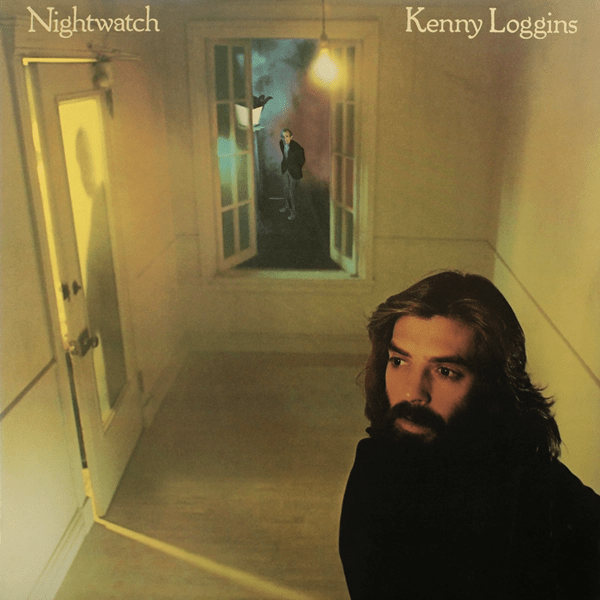
Nightwatch (1978)
Grade: 8/10
Nightwatch (1978, US #7): The original print ad for the Nightwatch album features the following bit of text:
Some of us do more with our fantasies than others. Kenny Loggins is one of those few who seek to realize their visions. On his very excellent new album, he does just that. He creates music around his own after-dark imaginings. Kenny Loggins’s “Nightwatch”. Where it’s always three o’clock in the morning.
I like how you did that Columbia Records copywriter. Suggestive point made. And yes, you are absolutely correct in your not-remotely-coy description of Nightwatch. KL did expertly transform his “visions”, otherwise known as “horny dreams”, into songs that are for the most part “very excellent”.
Nightwatch is KL’s “sexiest” album. Even the radio-friendly effervescent sweetheart of the LP, “Whenever I Call You Friend”, the hit duet with Stevie Nicks, is a big horndog with fountains of “sweet love flowin’ almost every night” and plans of “doin’ it” FOREVER.
It was an extremely ballsy move to begin Nightwatch with the dark, meandering nearly nine-minute title track (KL thinks you’re smart and sensitive enough to appreciate something so deep and demanding from him straight away). But as far as the album’s running order, that’s where the adventurousness stops. The rest of the tunes on Nightwatch are, for the most part, organized into two distinct clusters—one good, one mediocre—of like-sounding songs on each album side (KL also thinks you don’t want to think). Unfortunately, the sucky three-song cluster™ comes right after the exquisite opener. Each of the three devils that follow—covers of Jerry Riopelle’s “Easy Driver”, Joe South’s” Down In The Boondocks” and KL’s original “Down “N” Dirty”—is a goofy, randy-guy rocker. To be fair, they aren’t terrible. And they hold to the album’s overall theme in that they are vaguely “sexy”, albeit in a bug-eyed cartoonish sort of way. But they aren’t anywhere near the quality of Nightwatch’s other residents…oh hell. Know what? Screw being coy, let’s just call ’em what they are; filler, they are fucking filler. And it especially sucks to be confronted with ’em 1-2-3 in a row after the ethereal Nightwatch has hypnotized you into a love coma (they are real freakin’ mood killers). Thankfully, once the second cluster arrives they pretty much cease to exist. That trio of tunes—tracks five through seven aka the succulent 3-song cluster™— is summer breezy bitchin’ beautiful.
“Whenever I Call You Friend” is fun. It contains all the sonic elements needed to sate one’s ’70s pop needs (infectious chorus, family-friendly horniness, Stevie freakin’ Nicks). But, hot take comin’, “Wait A Little While”, the inspirational flute-fest of windblown hopefulness that follows it, is better. Unlike most of its roommates on Nightwatch, the melodically perky “Wait” only wants to be your friend. It doesn’t wanna do you (right, that’s not what I wanted to say but I’m trying to ration the curses). The song’s message is simple; things are going to get better, you just need to calm the hell down and—forgive me for saying this, there’s just no other word—chill. KL’s vocal performance on “Wait” is a sneaky good one full of clever little inflections ( love that breathy “turn the tide to your fay-ee-yay-vuh” falsetto).
It’s hard to know what to say about the KL-Michael McDonald co-write “What A Fool Believes” at this point. KL has long acknowledged that The Doobie Brothers version of the song (which hit #1 on the Billboard Hot 100 chart in April of ’79) is better than his. He’s right. There’s no point in pretending otherwise. Driving the point even further home is the fact the Doobie version ended up winning Grammys for both “Song Of The Year” and “Record Of The Year”. The KL version is home to some seriously scenery-chewing lead guitar (thumbs down) and not remotely as soulful as The Brothers take. All that said, in the context of Nightwatch, served up amongst like-sounding tunes, it sounds quite alright.

KL and MM accepting their 1979 Song Of The Year Grammy for “What A Fool Believes”. Beards baby, beards.
“Somebody Knows” is the hardest rocking song on Nightwatch. With its galloping drums and irritatingly urgent backing vocals, it comes thundering across Side Two with the confidence and cock(iness)of Led Zeppelin’s “Immigrant Song”, which is what it mistakenly seems to think it is. Still, that is kinda what “Somebody Knows” feels like after the supreme gentleness of the songs that preceded it, which is to say its aggression is hilariously disruptive to the pleasant and tranquil “nightwatching” we’d been doing up until then. But it is markedly better than any of the three tracks in the aforementioned rock cluster on Side One. And I can’t help but be charmed by its desire to not merely to “rock” us but to disrespectfully steamroll whatever peace we’d been enjoying just before it started. KL deserves to have a pair of heavy metal devil hands (aka the Sign of the Horns) held up in his honor for being such a wise guy, even if it was unintentional.
Nightwatch’s two best songs, the title track and album closer “Angelique” are outliers and not just because they happen to bookend the album. In terms of sentiment and structure, their eerie melodic-erotic vibes are light years away from the songs sandwiched between them. Unlike their roommates, “Nightwatch” and “Angelique” are not fun, three-minute “pop-horny” singles but instead are spectral five-plus minute epics about being carnally consumed. With their haunted, dreamy, vampire-lite vibes, they represent the most “goth” moments of the entire KL canon.
As it happens, KL thought pretty highly of these spacey, soft-rocking, quiet storm soul-ing, gothically-themed songs. In Still Alright, he admits to being dissatisfied with the finished album and feels the lack of consistent collaboration with producer Bob James was what kept it from reaching its artistic potential…and he specifically cites and exalts “Angelique” as an example of what could have been:
“Angelique” shows what Nightwatch might have been had we pooled our talents more intentionally. If we’d taken the time to craft an album’s worth of that kind of music, it could have been stunning. Instead, he (Bob James) more or less left me to my own devices.
As I mentioned in the intro, the album cover was the dirty, lowbrow reason I bought Nightwatch. And as intensely as I stared at it as a kid, I could never quite make sense of the images and what they were meant to convey. The front featured a bearded KL looking away as an old man peeped at him through a window. The back cover showed a clean-shaven Kenny doing some hide ‘n’ seek thing with a little girl in a sterile, DMV-style office hallway. Were these photographs representations of KL’s greatest fears (Aging? Beardless-ness?). I have no answer. Yet somehow the confusing, mellow creepiness on display in the images manages to capture the album’s vibe perfectly. Schizophrenic and sexy; that’s your Nightwatch. All hail Kenny Log-goth.

Keep The Fire (1979)
Grade: 9/10
Keep The Fire (1979, US #16): The front cover of the third KL solo album of KL cosplaying as a “sexy cult leader-wizard man juxtaposed in front of an air-brushed cosmic sea-scape” is trying to tell us something. Yes, the beatific gaze and precious glowing orb, were conveying a message, namely “I have moved on from the darkness of Nightwatch and am now embracing the light. Come, my disciples, join me”.
In a 1981 interview on the Canadian TV show The New Music, KL stated that the difference between Nightwatch and Keep The Fire was that the former was based in fantasy while the latter was inspired by real-life situations. As contradictory as it may seem, that approach somehow lightened the album, at least in a melodic sense. Produced by the legendary Tom Dowd, even the album’s pair of sad-boy tracks feature delicately uplifting melodies.
“Chuck-it-ta-pa,chuck-it-ta-pa”. So sayeth KL in his vintage beatnik hipster whisper opening ad-lib to the album’s stunning lead single, “This Is It”. Co-written with Michael McDonald, the song was Keep The Fire’s only big hit, peaking at #11 on the Billboard Top 100 pop chart (the album’s title track was also released as a single but only got to #36). “This Is It” isn’t so much an inspirational message as it is a shake-by-the-shoulders expression of frustration (albeit a glossy melodic one with a huge chorus because that’s how KL rolls). The song was inspired by KL’s father Robert, who’d grown frustrated with his health challenges and much to KL’s chagrin wanted to give up. In the case of “This Is It”, fiery sentiment inspired fiery vocals. KL sings himself right to the edge of his throaty threshold; by the time he hits that last “one way or another” in the track’s closing minute, he sounds as if he can hardly breathe. It’s one of the finest vocal performances of the whole KL career.
Unlike its predecessor Nightwatch, Keep The Fire is pretty much free of filler. Even the marginally silly Caribbean-flavored party tune “Junkanoo Holiday” is a charmer, full of funny, sweetly earnest lyrical choices (“you’re an island vol-cay-no!”) and entertainingly off-the-wall flourishes (bass solo baby).
There are a couple of rockers to be had on Keep The Fire and they are a whole lot better than the ones offered up on Nightwatch. Album opener “Love Has Come Of Age” is a sophisticated soft rock approximation of AC/DC’s “Dirty Deeds Done Dirt Cheap” (no, really, I’m not kidding) that KL says was intended for use in the 1980 film American Gigolo but was passed over because KL friend John Travolta dropped out of the lead role. The other rock(ish) tune is the proto-“Footloose”, bar band-ish goofball “Mr.Night” which thanks to its inclusion in the cult classic comedy Caddyshack, continues to party as hard as a drunk frat-boy on his birthday in the streaming universe. It garnered millions of plays despite never having been released as a single (more on that in a minute).
And it wouldn’t be a KL solo album without a sweet smattering of existential pondering. The big-chorused title track and soulful closer, “Will It Last” are Keep The Fire’s resident deep thinkers. They are full of questions, questions, questions directed at the stranger looking back at you in the mirror, significant others, and the universe at large. The pumped-up coda of the former features KL rapturously, repeatedly wailing “Who are you? Where are you? You’re not alone, it’s so wonderful”, which is a pretty damn Dostoyevsky-ian thing to say if you think about it which I sadly have, I mean here I am comparing KL’s words to those of a revered 19th-century Russian author, what the holy hell.
In keeping with the KL tradition, there’s a trio of fine ballads to be had on Keep The Fire. Cynical soul smoothie “Who’s Right, Who’s Wrong” (featuring Michael Jackson on backing vocals) and the she’s-not-coming-back-let-it-go acoustic ballad “Now and Then” (a nod to the old Loggins & Messina sound) are exquisite. Fun (fucking) fact: KL refers to the latter as “Wake The Fuck Up” in his recent memoir.
But the best of the three slowies on offer is the lustrous ‘n’ swoony ballad “Give It Half A Chance”. It is also one of the least-streamed songs on the album which, given the quality of it, is a sad fact I’ve yet to come to terms with. A co-write with underrated soft rocker-supreme songwriter Stephen Bishop, “Give…” features one of the breathiest and most falsetto-ed vocals in the entire KL discography. Anchored by a dreamy, almost comically languid guitar line, it’s also home to perhaps the most sensuous vocal delivery of the word “bathroom” in the history of pop music. It is very hot. The whole album is. Chuck-it-ta-pa, chuck-it-ta-pa.
Soundtrack Sidebar!: In 1980, KL contributed several songs to the Caddyshack soundtrack. “I’m Alright”, with its Eddie Money backing vocals and heavenly bridge got as high as #7 on the Billboard Hot 100 and has become one of KL’s signature songs (let us not forget his freakin’ memoir is called Still Alright). That tune’s success combined with KL’s other contributions to the soundtrack—”Make That Move” ( weirdy, truncated, essentially alternative mix of “I’m Alright”), the just-okay ballad “Lead The Way” and infamous “Mr.Night”—for better or worse, established KL as a soundtrack go-to guy. Fun fact: I saw this movie with an actual LPGA caddy whom my Mom was dating at the time and he absolutely loved it so Caddyshack was, in fact, Caddy Approved™.
This temporarily concludes the lush ‘n’ blissful era of the KL discography. It is now time to (sort of) ROCK (bitches).
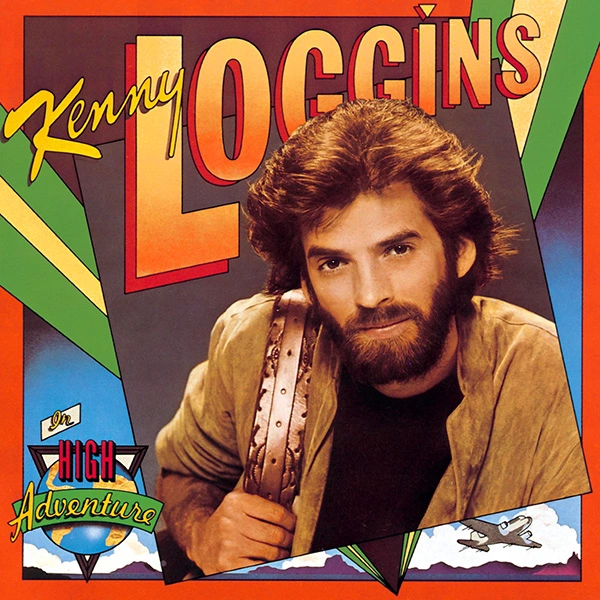
High Adventure (1982)
Grade: 9/10
High Adventure (1982, US #13): Musician and proud music nerd Questlove calls the practice of daily playlist-making and musical library maintenance “gardening”. That is a truly perfect characterization. It lends an air of sweet, quirky dignity to some genuinely obsessive, marginally OCD-ish behavior (also, hello to my fellow gardeners). So that’s the official clinical explanation as to why I maintain seven separate K.Loggins-themed playlists in my hoarder-esque library. Now among these excessive lists, is a slab of around 15 songs that goes by the no-frills title of “Loggins Rock”. It’s the gathering spot for KL’s most headbanging tunes i.e. the ones with the chunkiest power chords, the nastiest riffage, and the most (beautifully) strangulated vocals. The studio album with the most representatives in “Loggins Rock” is High Adventure.
Co-produced by Kenny and the legendary Bruce Botnick—whose CV includes the Doors’ LA Woman, and Love’s Forever Changes—High Adventure is the feistiest, most overtly AOR-flavored LP in the solo discography.
The album’s first single, the aggressively, unrelentingly exuberant “Don’t Fight It”, was a co-write/duet with Steve Perry of Journey. KL envisioned it as an ideal opening number for live shows and it’s easy to see why. With its shout-outs to “raising hell” and “moonshine” (the kind of catnip rebellious references that arena crowds especially loved back in the day) and a riotously goofy arrangement, it ticks all the boxes to potentially have filled that role. You either love this song or you freakin’ hate it (no comment). There really isn’t any in-between. The funny thing is that despite its front and center positioning, “Don’t Fight It” is not remotely indicative of High Adventure’s overall lyrical mood…which is basically, something ain’t right in paradise.
“The More We Try”, is a seriously dreamy ballad about not getting what you need. “Swear Your Love”, is an excellent, crunchy-guitared, shoulda-been-a-single confection about proving your love is real. Chunky, tuneful rocker “If It’s Not What You’re Looking For” can’t read your fucking mind and wants you to know you it has given every ounce of love it has to give. “It Must Be Imagination” is a dark, rain-soaked sonic brethren of Tom Petty’s “Stop Draggin’ My Heart Around” that is full of romantic insecurity and desperate for confirmation that you are still in love with it because you seem a little shifty. Melodically perky ‘n’ pragmatic pop anthem “I Gotta Try” is a sweetly packaged pile of cynical observations (the verses) whose chorus isn’t so much you-can-overcome as it is a celebration of complete resignation. Even the luscious ballad “Only A Miracle”, a song inspired by the birth of KL’s first son, is a melancholy, schmaltzy-stringed tearjerker. It should be noted that three of these aforementioned cynical beauties were co-written with KL’s first wife Eva Ein so it’s all pretty meta.
Oh, oh “Heartlight”. 1982 was the year of E.T. the Extra-Terrestrial, the Stephen Spielberg-directed film about a wrinkled sweetheart of an alien who just wanted to go home. Everyone loved E.T. and shops the world over were soon flooded with posters, books, and little leathery plush replicas of him (Yeah, I had one too, and can literally feel his beanbaggy body in my hands right now). By the end of 1982, songs by respected and well-established artists paying tribute to the world’s best-loved spaceman began to appear. First on the ledger was Neil Diamond’s insane “Heartlight” in 1982, a romantic power ballad sung from the point of view of the film’s main (human) character, Elliot. Then came KL’s pleasant, acoustically propelled shuffle “Heartlight” (FYI, “Welcome To…” was added to the title soon after release to avoid confusion). The thing is KL’s song had fuck-all to do with E.T. It was in fact inspired by letters written by students at The Heartlight School in California (whose kids’ chorus sings backup on it). But as “Heartlight” hit the pop charts at the same time the entire world had a heart-on for E.T., it was thought to be a song inspired by the film (I know that’s what I thought when I first heard it back then). Even with the most minimal projection, the description of personal connection in the lyrics can easily be read as Elliot and E.T.’s love story. Because of all this, even though I know it’s wrong, I still hear “Welcome To Heartlight” as lightly ballsy, delicately fist-pumpin’ E.T. appreciation song; it sounds better that way.

“Heartlight” wasn’t about this. But it’s more fun to think that it was.
This brings us to the album’s centerpiece-kingpin-queen bee and certified KL classic, “Heart To Heart”. Composed with renowned producer David Foster and KL’s brother from another mother, Michael McDonald, “Heart To Heart” is one of the finest tunes in the entire Loggins canon (a top-fiver to be sure). A sleek, melodic plea about laying all the cards on the table, “Heart To Heart” sounds deceptively sweet and groovy at the start (thanks in no small part to McDonald’s keyboard riffin’) but grows increasingly heated and desperate as the song progresses. It is a cornucopia of classic KL vocal peacocking. He breathily whispers (“I don’t wanna leave”). He tearily falsetto’s (“This is our last chance”). He wails to the sky (“Does anything last forever?!”).
Despite its quality, High Adventure’s feisty, fabulously tuneful-soft rock-AOR-power chord party monster ass tends to sit near the bottom of the popularity rankings on the big streaming services. Yeah, its lyrics are full of restlessness and frustration. And sure, it’s not as optimistic and breezily melodic as your standard KL album. But out of all the studio albums, High Adventure is the one that sounds the most like his eternally popular soundtrack work. In fact, think of it as just that; a soundtrack to an imaginary movie. The album cover starring KL as Soft Rock-Indiana Jones™ looks like a film poster. The songs tell the story of someone desperately trying to navigate the unpredictable and extremely dangerous wilds of a relationship. High Adventure is the true unsung hero of the discography. It was also the last truly great studio album KL would release for the remainder of the decade.
Soundtrack Sidebar 2!: In 1984, KL hit big with his contributions to the Footloose soundtrack ( “Footloose” and “I’m Free ( Heaven Helps The Man)”. As of this writing, the overbearingly fun title track has been streamed over 700 million times. That is sick. I admit, “Footloose” wouldn’t even make my KL top 100 ( just tired of it) but I continue to stan hard for the endearingly urgent, awesomely AOR, oh-so-eighties “I’m Free”. That one fucking rules.



Three amazing KL 7″ sleeves from around the globe in the ’80s. Benevolent starship commander, infamous murderer, JCPenney-teen-girl catalog model, you name it, Loggins can be it.
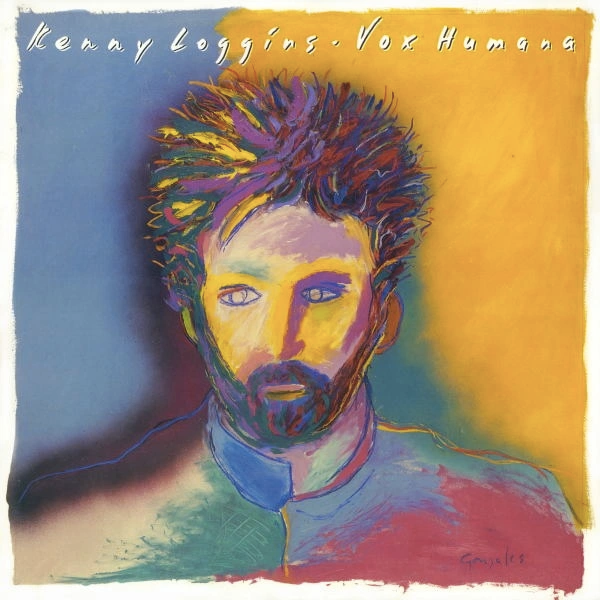
Vox Humana (1985)
Grade: 5/10
Vox Humana (1985, US #41): By 1985, MTV had firmly established itself as the premier musical tastemaker in the USA (and became my personal overlord). If an older artist hoped to compete with the network’s favored hot young things like Duran Duran and Madonna, they had to modernize both sonically and sartorially (aka adapt or “die”). KL went with the flow. He cut his hair into a short ‘n’ spiky style. He began rolling up the sleeves of his jackets. And, most significantly, he waved goodbye to the traditional band sounds he’d previously employed and dove headlong into the synthesized sound that was dominating the pop charts…which brings us to the fifth KL solo album, Vox Humana.
Vox Humana isn’t outright terrible, but calling it “mediocre” feels overly complimentary. Let’s just say it sits somewhere in between those two disappointing characterizations.
The album’s first single, opening track, and unofficial hype-man “Vox Humana” is the kookiest, most off-the-wall track KL ever recorded. If you ever wondered what it would sound like if “Footloose” and “I’m Alright” were violently mashed together into one uncontrollable, over-caffeinated monster, “Vox Humana” is here to sate your curiosity. KL is open about the fact that the manic rock-dance tune was a conscious and overt attempt to create another “Footloose”. While it isn’t quite as infectious as its inspiration, it possesses an appealingly unhinged quality and is liberally decorated with all kinds of fun ‘n’ ridiculous ’80s-style production flourishes. Think of it as your eccentric, yet lovable, crazy aunt or uncle in song form.
Composed by KL and Michael McDonald with Ed Sanford, “No Lookin’ Back”, an opposites attract marriage of chipper melody to questioning/gotta-get-the-hell-away-from-here escape lyrics is also a pretty sweet song. But good as it is, KL can’t lay claim to the definitive version. That distinction goes to the McDonald man, who even went so far to name his 1985 album after it (MM planting that flag hard). The McDonald version has a lot more “oomph” than KL’s, which is to say it’s just a whole lot ballsier than his. This point was driven home by it’s appearance in the legendary, kick-ass escape movie, Thelma and Louise, which shall forever serve as an eternal affirmation of its superiority.
The album’s best tune by several hundred miles, is the sinewy, sensuous, soulful seven-minute seducer, “Love Will Follow”. Delivered in a breathy falsetto, complemented with some mandatory-in-the-’80s Sexy-Sax™ and clocking in at languorous seven minutes and fifteen seconds(!), it’s Vox Humana’s finest, foxiest moment.
Okay. It’s time to talk frankly about one of the most beloved ballads in the KL songbook, “Forever”. Describing “Forever” as an insanely overwrought devotional power ballad feels like an understatement. Its musical trajectory is something like BOMBASTIC-quiet-EVEN MORE BOMBASTIC. It features a chorus that is ALL CAPS ALL THE TIME. Now there’s no shame in liking or even loving this giant heart-shaped Godzilla of a song (you sentimental fool you). But it’s also okay to freakin’ hate it and cringe every time it insidiously enters your ear space and plays over the CVS or Walmart soundsystem (I see you, Grinchy comrades). “Forever” is just one of those “ear of the beholder” songs. As for me, I remain a fence-sitter meaning I both dislike it and include it in playlists when I’m “feeling ’80s”…which is most of the time.
Closed eyes, clenched fist, furrowed brow. KL is seriously feelin’ it in the “Forever” video. Especially when the clock hits 4:23. Also, that baggy pseudo-plaid suit is bitchin’.
The rest of Vox Humana is occupied by a slate of interchangeable, unexceptional, vaguely danceable pop-soul songs (“Loraine”, “I’ll Be There”, “At Last”, “I’m Gonna Do It Right” plus the painfully perky, overly eager “Let There Be Love”). I know that sounds dismissive but as far as KL music goes, this shit was weak.
The four good songs—or three depending on how you feel about our melodramatic friend “Forever”—can’t make up for the fact that Vox Humana‘s other five tracks simply aren’t that memorable. Still, despite its less-than-stellar content, Vox Humana isn’t the most disappointing, or even the worst, KL studio album in the discography. No, that honor belongs to what came next.
Soundtrack Sidebar 3!: In 1986, KL recorded two songs for the Top Gun soundtrack ( yes, I know, duh). The—hot take comin’—just okay but popular “Danger Zone” was written by electro-genius Giorgio Moroder and Tom Whitlock with KL contributing some words ‘n’ riffs (sidebar: KL says he was trying to mimic Tina Turner’s ’80s-era vocal style for the song. Listen to it that way and it will sound infinitely cooler). Then there was the KL-Peter Wolf (the songwriter not the J. Geils singer) composition “Playing With The Boys” which soundtracks the legendarily homoerotic volleyball scene from the film. KL claims the sexual attraction between the scene and the song was unintentional and alludes to its being interpreted this way as a surprise in his memoir…to which I say, no Loggins, I don’t accept this notion and I’m not gonna allow you to ruin this for me with your “facts”.

Back To Avalon (1988)
Grade: 3/10
Back To Avalon (1988, US #69): Back to Avalon can be filed alongside those other well-documented, not-so-great ’80s albums by previously successful superstars. The roll call includes David Bowie’s Tonight (oof), The Rolling Stones’s Dirty Work (eegh), and, for the sake of stylistic comparison, KL’s soul-pop compatriots Daryl Hall & John Oates’s Ooh Yeah! (ugh). Despite having been released nearly 40 freakin’ years ago, both Tonight and Dirty remain critical punching bags, and regularly appear at the bottom of lists ranking Bowie and Stones’ albums.
Back To Avalon isn’t worse than any of those mediocre records. But when sat next to the first four KL solo LPs, it straight-up sucks.
With six producers at the helm, and over a dozen songwriters contributing, KL often sounds like a special guest on what was meant to be his own album. That wouldn’t be a deal breaker if it were full of unimpeachably great songs, but it is not. The album contained not one, but two KL soundtrack songs; the okay, AOR-ish, Huey Lewis “The Power Of Love” sound-alike, theme from Caddyshack II “Nobody’s Fool”, and underwhelming ballad “Meet Me Halfway” from the Sylvester Stallone arm-wrestling epic Over The Top (Genius Giorgio Moroder co-wrote the latter but it’s one of the lesser lights within in his staggering songwriting CV). As KL had never before featured songs specifically recorded for soundtracks on a studio album, the inclusion of these two tracks seemed a bit odd. Was he caving in to his new official soundtrack-guy persona? Was he padding out the album because he didn’t have enough songs? Either way, their presence on an actual KL studio album was a clear sign that something was a bit off with Back To Avalon.
Things went straight downhill from there. From “She’s Dangerous” (the weakest M.McDonald/KL collab ever) to the hyperactive and terrible cover of the “Tell Her” (gender-flipped version of The Exciters 1962 hit “Tell Him”), to nearly everything in-between (a slate of seven faceless, interchangeable adult contemporary pop-soul songs, none of which deserve to be singled out), nothing stood up to what had come before…well, almost that is. To be fair, the album did have one genuinely fabulous occupant. Melodic-rock banger “I’m Gonna Miss You” is a fine, dirty-sweet-with-an-edge break-up tune that is as good as any of the Arena Rockers on High Adventure. It deserved a better home than Back To Avalon provided.
Soundtrack Sidebar 4!: In addition to the two aforementioned soundtrack contributions, KL did a duet with Gladys Knight for the film Rocky IV called “Double Or Nothing” which despite the participation of these two spectacular singers is painfully dated and unspecial. It is not remotely good enough to be considered for inclusion on my speculative Now That’s What I Call Loggins album…yet it remains one of KL’s most streamed tunes so what the hell do I know.
What You’re Feeling There’s A Reason For: So Back To Avalon was bad…but it did do one good thing; it helped trigger a genuine musical epiphany, the gist of which was that KL was tired of singing other people’s songs and actively chasing radio airplay. He also wasn’t too crazy about the fact that soundtrack tunes were the things he was becoming best known for. By late 1988 the dyed-in-the-wool albums guy living inside KL had had enough of this tag team of creative derailment. So back into the studio he went to record a new LP.
The first thing this defiant new version of KL did before recording started was to tape a sign on the wall to establish the vibe. It said “Fuck radio”.
Yes, we’ve now arrived at the part of the discographic breakdown where KL defies the historical rock god odds and in his twentieth year of being a recording artist makes one of the finer albums of his career.
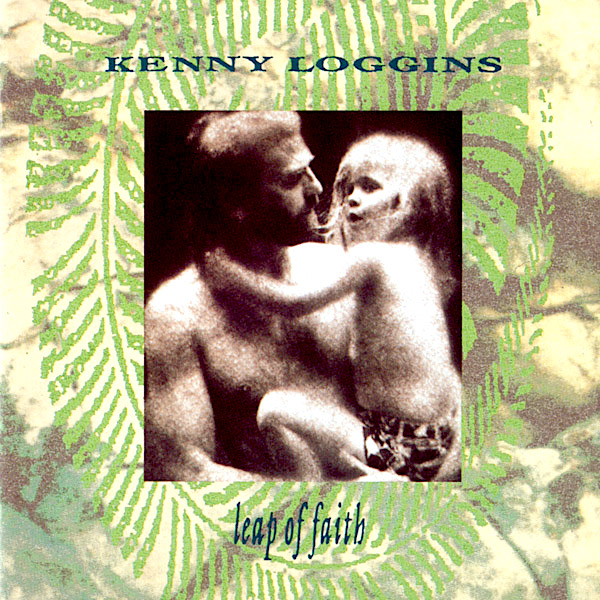
Leap of Faith (1991)
Grade: 8/10
Leap Of Faith (1991, US #71): As we have seen time and time again in the pop world, successful artists tend to have a handful of peak creative years before slipping into the creative doldrums ( right, no matter how much one loves Prince we all recognize that his ’90s and beyond stuff can’t touch what he served up in the ’70s and ’80s). Some bands call it a day while they are still peaking, going out on a creative high thereby avoiding the inevitable decline and besmirchment of their reputation (e.g. neither The Police nor The Smiths made a bad studio album). Every now and then there will be a rare bird whose consistent goodness spans decades (e.g. Kate Bush, Sade). Then there are established artists who continue to make perfectly fine but not necessarily essential albums in their twilight years (e.g. Dylan, Springsteen). But perhaps humanity’s most inspiring birds of all, are those artists that actually get better with age (e.g. Radiohead, Low).
Making an album rivaling the supreme work you did decades before is a rare occurrence. KL was already twenty years into his recording career when he released Leap Of Faith. It is KL’s favorite KL album.
There’s a quote in Still Alright that perfectly pinpoints Leap Of Faith’s vibe:
“Sometimes I feel like my songs talk to me, trying to get my attention. Leap Of Faith was very much that kind of record. I intimately understood the impetus behind every track. At one point a reporter asked me about the album in contrast to my soundtrack work, and I told him I was scoring the movie of my life. I like that answer”
In a nutshell, Leap Of Faith is a bunch of handsome, new-agey pop songs documenting the end of KL’s first marriage and the beginning of the relationship that would lead to his second. To be even more brutally reductive, it’s about death and rebirth. It’s also the first Loggins album where he truly runs wild, not giving a crap about the rules or what’s cool or logical. There’s a freakin’ children’s choir. There are deep cut-cult hero guests like the late slide guitar virtuoso David Lindley and Mavis (queen-legend) Staples. There’s weird stuff like KL having esteemed session player Hiram Bullock take over the latter half of the title track with a crazy improvised vocal run. It’s both emotionally buck-naked and cloyingly sentimental. The topper is that nine of its twelve tracks run over five minutes meaning Loggins fulfilled his mission and got to flip a big ol’ sonic bird to the radio programmers.
Meet Kenny “Proggins”. Leap Of Faith sees KL exploring his prog-rock side (in his soft rock way of course), something which he’d hinted at on Nightwatch but had never fully indulged in before. With its extended verses, lengthy wanderings away and back to the chorus, “Leap Of Faith” the song, is a soft rocker with delicate leanings toward the Genesis’s and Marillion’s of the world, meaning it’s an epic wind-blown journey whose main priority is still the tune as opposed to the instrumental noodling. The somber acoustic ballad “My Father’s House” has a similar vibe, sounding like a mash-up of the aforementioned Genesis’s lovely old ballad “Entangled” and a wistful Dan Fogelberg deep cut. Fun fact: KL was also super into Peter Gabriel’s incredible soundtrack album The Last Temptation Of Christ at the time he was recording Leap Of Faith and its worldly sonic influence is also evident on a number of tracks.
Of course, there are also plenty of straight-up pop songs living on Leap Of Faith too. The best of the bunch are lush, divorce-themed smoothie “The Real Thing”, breezy karmic-connection love story “Sweet Reunion” and the album’s crown jewel, the grand, seriously swoony ballad “Too Early For The Sun”. With a run time of over eight minutes, “Too Early” is the longest track on Leap and features the aforementioned Mavis Staples who lands like an angel near the outro and proceeds to gently kill. On the second tier of goodness are the bubbly pop-gospel singalong and downright Winans-esque “If You Believe” and the idiosyncratic “Now Or Never”, a cheery yet self-admonishing mish-mosh of glistening acoustic guitar, worldly rhythms, and the always welcome random chunky power chords.

Loggins talking about Leap with Jay Leno in October of ’91. Look at the size of that longbox.
Of course, it wouldn’t be a Loggins album without at least a little bit of gushy sentimentality. Representing Team Corn are “Cody’s Song”, a well-meaning mush-fest dedicated to KL’s second son, and the squishy, syrupy “I Would Do Anything” a duet with Sheryl Crow which for added bonus cringe features ocean sounds in its outro. Then there’s “Conviction Of The Heart”. If you are even a remotely cynical soul, this earnest plea for environmental awareness probably won’t move you. Between the little kid acapella vocal that opens the track which I confess to editing off more than one mix tape back in the day (I am the devil) to the choir accompaniment and gospel-lite vibe, it’s well-meanin’ but somewhat cheezin’.
In his Still Alright memoir, KL mentions that within the devoted KL fanbase lives a sub-group that favors Leap Of Faith above all other albums:
The people who “get” it, whose devotion to the record rivals my own, are like a community unto themselves. I call them “Leapers”. If you’re among their ranks, you know who you are. It’s a bit of an exclusive club, like a secret society without the handshake.
When I first read that, I was skeptical. KL talked about Leap Of Faith as if it was a fabled cult classic, like Weezer’s Pinkerton or Neutral Milk Hotel’s In The Aeroplane Over The Sea, the sort of thing only an innately empathetic, in-the-know ear could appreciate (and famous for being regarded that very way).
But then I thought about it. Much as I love KL, did I have some built-in bias against Leap’s cult qualifications because it wasn’t a “cool” record? Was the sneeriness triggered because it seemed like he was trying to make Leap sound “cooler” than it actually was?
“Cult classics” are frequently the most polarizing LPs in an artist’s discography, the most misunderstood, pointedly personal, and least successful sales-wise (at least upon initial release). They often detour from the established creative pattern of the artist, are more experimental and yes, indulgent. By those standards, Leap could fit the cult classic bill. It wasn’t a smash hit, only getting as high as #71 on the Billboard pop album chart. Three of its four singles hit the Adult Contemporary top ten but only “Now Or Never” even penetrated the pop Top 40 and barely at that. The album was home to the longest and most autobiographical songs of KL’s career. Take all of these established cult classic personality traits into consideration and know what, the existence of “Leapers” doesn’t seem that far-fetched after all.
What Leap Of Faith definitely is though, is a sentimental, occasionally brutal, schmaltzy, and desperately over-the-top soft-rock album that wears its heart on its sleeve. After the two not-so-great albums that preceded it, it was a genuine hell yes-breath of fresh air. KL still freakin’ had it after all.
It turned out Leap was only part one of a larger exploration and dissection of KL’s personal life. The next chapter was even more intimate and revealing…but mostly, it was crazy. Here we go…
Soundtrack Sidebar 4!: After the artistic triumph of Leap Of Faith and reclamation of his muse, you’d have thought that KL had lost interest in doing movie songs he didn’t write. But old habits die hard. Slushy ballad “For the First Time” featured in the film One Fine Day and went to #1 on the Billboard Adult Contemporary chart. It was even nominated for a freakin’ Academy Award (didn’t win). But it isn’t remotely as good as his own melodramatic mush-monster “Forever”.
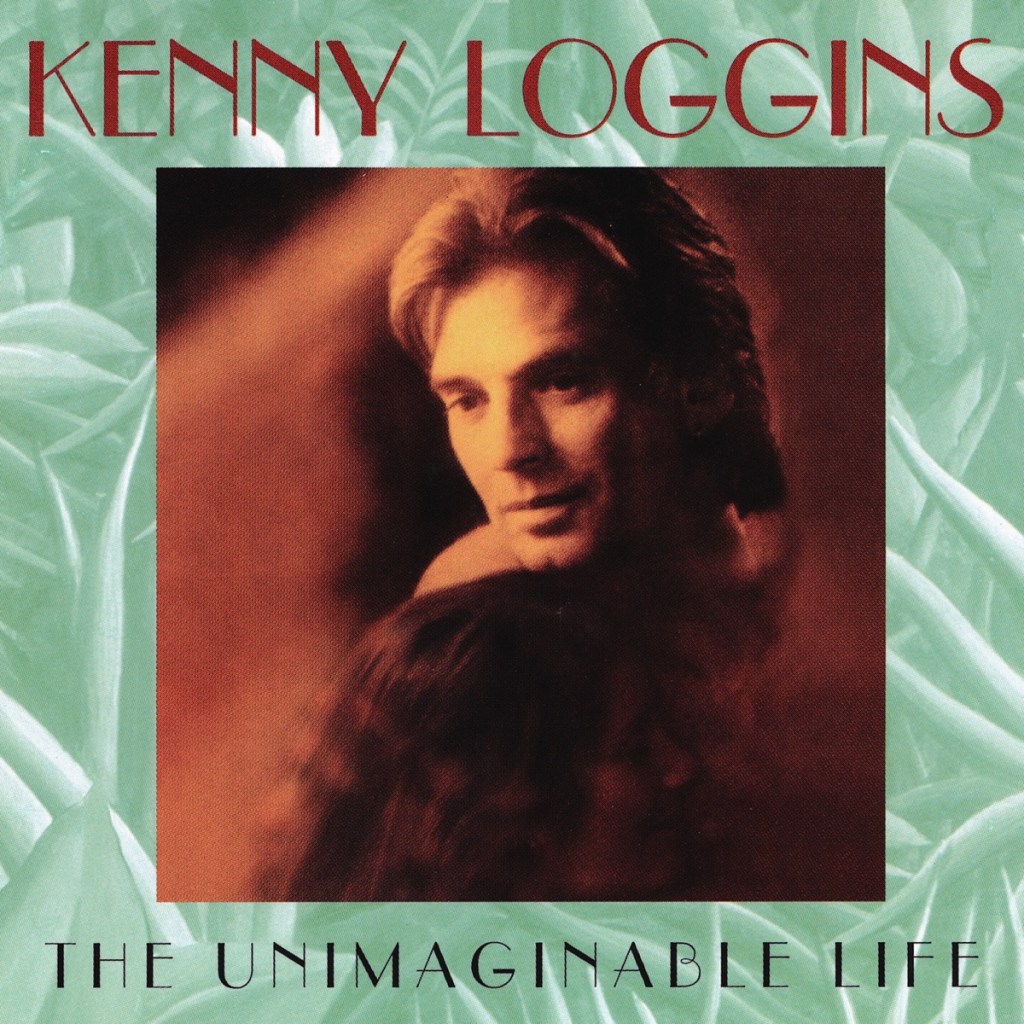
The Unimaginable Life (1997)
Grade: 4/10
The Unimaginable Life (1997, US #107): As this is the first I’ve ever gotten to share my feelings about the craziness that was KL’s The Unimaginable Life “project”, I need to let loose for a bit (that’s an inside joke for those of you in the know about how Kenny and his second wife Julia Cooper first met). There was of course an album which I will get to in a minute. But there was also a book of the same title released to coincide with it.
The Unimaginable Life book is a masterpiece of oversharing, celebrating the courtship and marriage of Kenny and Julia, KL’s former colon hydrotherapist and spiritual guide. Amongst its over-the-top declarations of love, angst, and insecurity lives a personal (understatement) anecdote so hilariously unsettling that even though 20+ years have passed since I first read it, I have never quite been able to extricate from my brain. It involves an actual red-hot chemical reaction that occurred within some lady parts and know what, I’ve already said too much. I’m pretty sure that was not supposed to be my big takeaway from Unimaginable Life, “the book” but there you have it.
The book was less a rock ‘n’ roll memoir than it was a new-agey, semi-self-help, pseudo-diaristic ramble that was so specific to the Kenny and Julia story that it was very hard to “feel” or become “engaged” with. Shit, I know I’m dancing here. What I’m saying is that even as a hardcore fan, I found myself growing more and more impatient as I read, determined not to skim or skip, because you know, it was KL and I was loyal like that. Yeah, there are hints of sordid rock ‘n’ roll behavior that KL alludes to early in the book, but things quickly denigrate into descriptions of the moon over Big Sur, crystals, and hyperbolic love letters.
The sharing wasn’t confined to the pages of the book either, oh no. I vividly remember a magazine interview promoting The Unimaginable Life where KL and JL described how Kenny’s shaving his beard off had created a new erogenous zone for them to explore. The fact that they volunteered this intimate personal nugget is both hilarious and wonderfully weird as shit.

The beard-free KL in 1997. Welcome to the erogenous zone.
Still, I retain a lingering affection for the book and all its indulgent, relentless self-analysis. Not only because it is head-shakingly nuts in places but because I think the Loggins-zez were coming from a genuinely sincere place. Thus Unimaginable Life still sits proudly on the bookshelf, in between more tragic tomes about Janis Joplin and Lynyrd Skynyrd, blessing me with its idealistic, rainbow light every time I walk by…which brings us to Unimaginable LIfe, the album.
The clinical description of The Unimaginable Life goes something like this; TUL (let’s just call it) is an R&B-flavored Adult Contemporary pop album that occasionally flirts with smooth jazz and ’90s style Peter Gabriel-ish (him again) world-ish sounds. There are also a lot of New Age-y sonic touches and earthy sound effects (a duduk here, some crickets there).
While it is similar in overall vibe to Leap of Faith and features a lookalike cover design, TUL leans far harder into the R&B than its predecessor. To be clear, KL’s soul sound is not the melodic, fun ‘n’ funky sort that was dominating radio in the ’90s but the LA slick, music-for-grown people kind. For TUL, KL enlisted the one person who could straddle the line between the two styles with true expertise; Kenneth “Babyface’ Edmonds. On paper, the collaboration sounded promising, but their two co-writes “All I Ask” and “No Doubt About Love” turned out to be surprisingly faceless and forgettable. And that’s the situation with most of TUL’s contents. KL also revisits and expounds upon themes from Leap Of Faith. “This Island Earth” is a well-intentioned environmentally-themed song in the vein of Leap’s “Conviction Of The Heart” but lacks the sticky chorus and tunefulness of the latter.
While all the aforementioned stuff is disappointing, the toughest tracks are those most closely related to the book. The primary example of this is “Birth Energy”. Slathered in loved-up spirituality and featuring both a cringey spoken word section and an ostentatious Santana-like guitar solo, “Birth” is the sound of a peasant-bloused cult, dancing on a tropical beach around a bonfire. It is the “Revolution # 9” of TUL which is to say that no matter how much you love the KL, getting through it requires genuine willpower.
In addition, there are two songs that so resemble existing old classics by other artists, they are practically tributes: “Art Of Letting Go” (Stevie Wonder meets Steve Miller’s “Fly Like An Eagle” hybrid) and “I Am Not Hiding” (a bland sound-alike to DeBarge’s candied sweetheart, from 1982, “I Like It”).
After the triumph of the Leap album, it’s hard not to feel let down byTUL. But, but there are actually a couple of redemptive moments aka bonafide beauties to be had! “The Rest Of Your Life” had actually been made available a few months before its appearance on TUL, as part of the hits compilation Yesterday, Today, Tomorrow. A handsome melodic sibling to “Heart To Heart”, “Rest” is reassuringly reminiscent of early ’80s pop-Loggins. The song starts lonely (“solitary life”, “dinner alone”, “independent heart” all getting namechecks) before falling headfirst into rapturous love (“you’ve given me the rush of starting over”) in the most tuneful way imaginable. Then there is “One Chance At a Time”.
“One Chance At a Time” has ambitions y’all. Written with future Alanis Morissette collaborator-Jagged Little Pill producer-songwriter Glen Ballard, it stands taller than nearly every other song on TUL. “One Chance” starts as a spare, twinkly self-flagellating ballad, before gradually morphing into a fabulous string-soaked power hymn. Judging by KL’s vocal delivery, he’d been completely bowled over by Mavis Staples’s guest spot on Leap Of Faith because damn, the growly, lowdown vocal he delivers here is positively Mavis-esque and brimming with seductive, soulful fire.
The Unimaginable LIfe was the closing of a chapter. Six years would pass before KL released another pop studio album. In between, he kicked out both kids and Christmas-themed albums (we’ll talk about those shortly) but from this point on the pop stuff became less of a priority.
Soundtrack Sidebar 5!: 2000’s The Tigger Movie features a KL collaboration with the legendary Sherman Brothers who’d written countless classics for a myriad of Disney films including The Jungle Book and Mary Poppins. They were also behind the devilish “It’s A Small World”. “Your Heart Will Lead You Home” plays over the ending credits and sounds exactly how you’d imagine i.e. saccharine-packed and generically inspirational…you know the drill.
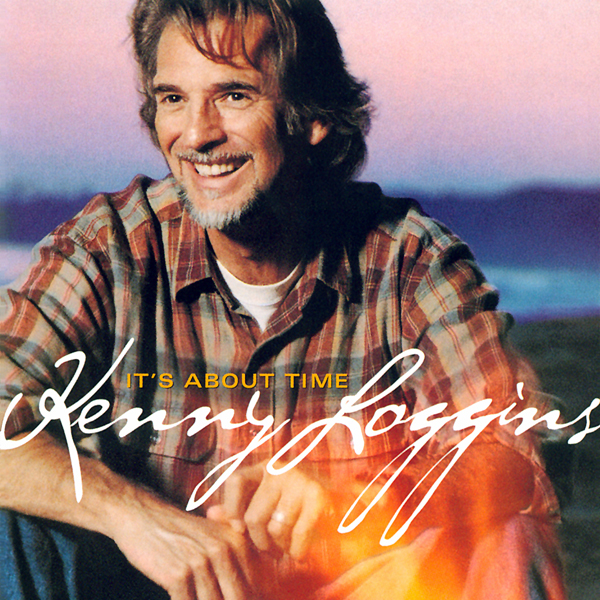
It’s About Time (2003)
Grade: 4/10
It’s About Time (2003, didn’t hit the U.S. Top 200 pop album chart, but did get to #10 on the U.S. Independent Album aka Indie chart): KL had already begun recording It’s About Time when Sony/Columbia decided to drop him from the label. According to him, it was a pretty heartless break-up with a lower-level label VP calling him as opposed to one of the big execs and zero words of gratitude for the hefty revenue he’d generated for them over the years. He ended up using his own savings to pay for the completion of It’s About Time.
It’s About Time isn’t an essential, must-have album. It’s more of an “Oh cool, KL is still into doing new things and there’ll probably be a couple of good songs on it” record.
In keeping with all of KL’s post-’80s studio albums, there is some serious soul-baring happening on It’s About Time.”The One That Got Away” is an open letter to KL’s son Cody from whom he was estranged at the time. Treacly in arrangement, passionate in delivery, full of love (“I miss you every day”) and bitterness (“I’m sick and tired of doin’ time, for a crime I didn’t do”), it’s by far, the LP’s most memorable tune. The song features a stellar vocal and, to acknowledge the pop elephant in the room, really brings home the similarity between the voices of KL and George Michael as much as anything in the entire Loggins catalog. Other goodies include moody, low-key ’70s soft rock-style shuffle “Brothers” (think Crosby & Nash or Firefall) and the cringely titled but soulfully swirling, sweetly slushy “I Miss Us”. Honorable mention goes to exceptionally tuneful, Babyface soundalike and proud mushball “With This Ring” (there’s a lot of sentimentality happenin’ on It’s About Time in case you haven’t noticed). It should be noted that all four of the aforementioned songs were co-written with pop-rocker Richard Marx (did he murder Mary in his 1992 “Hazard” video? You decide). Apart from their one uptempo collab, the huffing ‘n’ puffing but never living up to its title “The Undeniable Groove”, these two seasoned blokes worked really well together.
To elaborate on that last bit, the least compelling tracks are the uptempo ones. From the Seal-influenced but not up to Seal-standard “This Is How My Song Goes” to the silly, country-flavored “Alive ‘n’ Kickin” to the very ordinary groove of the title track (a shockingly weak collab with the angel Michael McDonald), none of the pumped-up songs truly shine.
It’s About Time is not a full-blooded beast of an album. But it is home to a few tunes worthy of inclusion on an ultimate Loggins playlist…and after all that came before, that’s more than enough.

How About Now (2007)
Grade: 5/10
How About Now (2007, did not chart): Begging. Broken-hearted belligerence. Bob Dylan’s Blood On The Tracks. Marvin Gaye’s Here, My Dear. Yup, nothin’ like a crusty, cranky ol’ divorce album to spice up the ol’ discography.
How About Now is KL’s self-christened “official divorce album”. It is not a seminal break-up classic like the two aforementioned LPs…but it is definitely less of a jerk than either of those angry, but admittedly beautiful animals.
How About Now is perfectly symmetrical in that six of its dozen tracks are good and, gonna be blunt, six are not (this album would’ve made a solid EP). The KL voice had matured at this point so the vocals tend to have a more handsomely grizzled quality to ’em which perfectly fits the overall mood…and fits like a glove on the more country-flavored tunes. The album’s three biggest and best twangers are the catchy as hell “I’ll Remember Your Name”, “A Year’s Worth Of Distance” (which has a strain of a Jackson Browne-Running On Empty Era circulating in its veins as well), and the epic, fab-collab with singer-songwriter Radney Foster, “This Too Will Pass”, a lush, over-the-top Eagles-style throwback and a true hidden gem within in the KL canon (for real). And what would a divorce album be without some straight-up, cryin’-in-your-beer balladry? Countering the tunes of party-stomping defiance are the angsty acoustic slow burn singalong, “Truth Is”, and the diaristic, mournful “I Don’t Want to Hate You Anymore”. Also gotta give an honorable mention to the infectious “If You Never Been There” and its charmingly ’90s-ish Edwin McCain stylings (hey, it’s okay to like McCain).
The other six tracks on How About Now are pretty pedestrian as far as Loggins tunes go. From the try-way-too-hard soul-gospel cornball, “That’s When I’ll Find You” to the exceptionally bitchy, bar band bust “I’m A Free Man Now” to a superfluous remake of Loggins & Messina chestnut “A Love Song”, none are a patch on the aforementioned stuff. And though it’s obviously meant to tie a neat bow on all that’s come before, the raspy, self-aware closing track, “One Last Goodbye Song” is “just okay” and not a shoo-in pick for anyone’s Loggins’s Greatest Sad Boy Slow Jams playlist.
As of this writing, How About Now—official home to a handful of sugary, searing and perfectly fine country-pop songs—stands as the last pop album KL has released. Yeah, there are moments of “man criticizing woman who can’t talk back” present on the album as a whole, but you don’t get showered with the overt nastiness that you hear in the Dylan and Gaye albums either. And KL clearly needed to make this kind of record to exorcise his heartbreak and move on. As he apologetically croons on “One Last Goodbye Song”:
Please forgive my tendency to wanna strip it to the bone
The trouble is my stubborn heart
Has got a mind all of its own
Live Albums
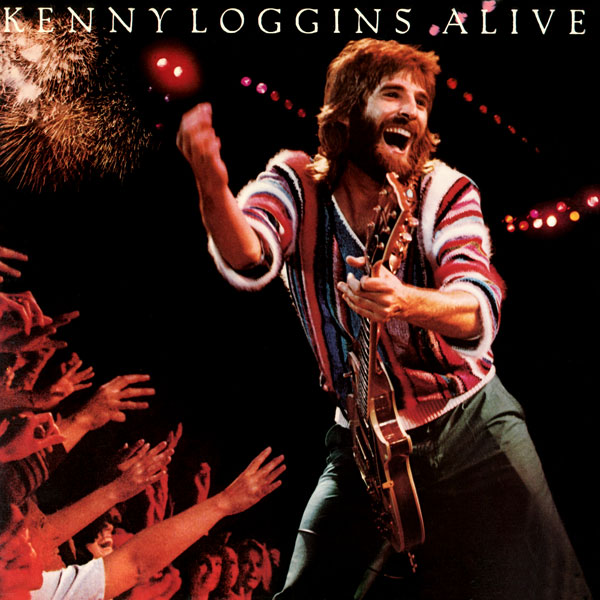
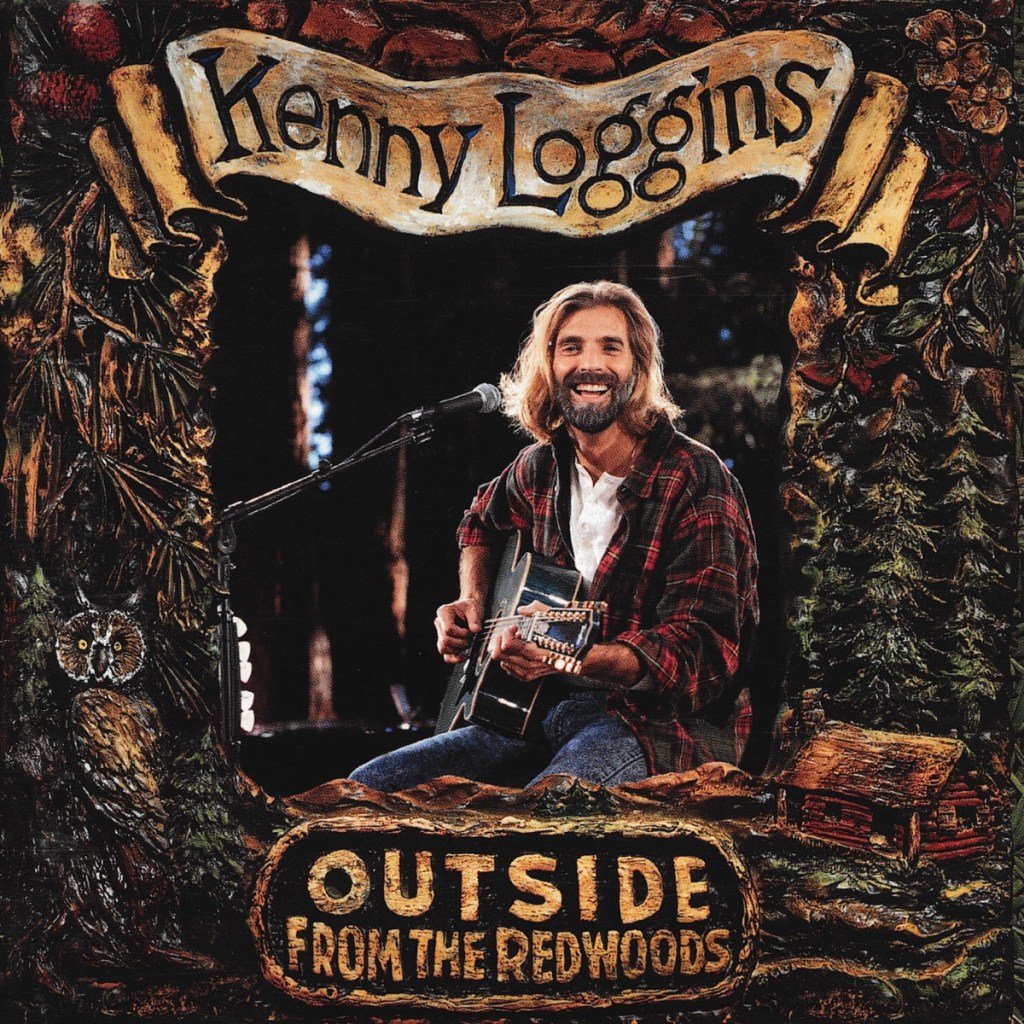
Kenny Loggins Alive! (1980, US #11); Outside: From The Redwoods (1993, US #60); Listening to a good live album can feel like an out-of-body experience. The Allman Brothers At Fillmore East will literally transport you to a grungy NYC East Village theater at midnight in 1971. Aretha Franklin’s Amazing Grace will sit you down in a steamy LA church in 1972 and shake your soul.
While Kenny Loggins Alive! isn’t as gorgeously gritty as those two sweaty, wonderful things, it does possess genuinely transportive qualities. Once the unnamed MC bellows “THIS IS IT, LOS ANGELES!” at the start of Side One, you are there i.e. floating within a sweet bubble of soft rock in a weed-scented West Coast sports arena in the late ’70s which honestly, sounds pretty nice to me, as does the album.
The performances are uniformly tight, and as the recordings were drawn from shows that took place from 1978-1980, the track selection is pretty flawless. Opener “I Believe In Love”, and deep cut “Angelique” rival the original studio versions in overall goodness but it’s the ballads that steal the show. At this stage of his career, KL was well aware of his “hot troubadour” status and flexed this muscle hard on the Alive! slow jams. “You Don’t Know Me” and “Why Do People Lie” are filled to the brim with breathy wonder and supremely calculated moments of falsetto all of which ignite rapturous shrieking from the heated babes in attendance. So mission accomplished there Loggins you manipulative devil.
Live Sidebar!: 1982 saw the release of a concert video titled Alive! “, which despite the name is not a visual representation of the album but a full-length live concert at the Santa Barbara Bowl from the same era ( confusing I know). It is notable for KL’s all-red ensemble which resembles a jumpsuit even though it consists of separates. The performance of “Celebrate Me Home” features some turned-up-to-11 artist-audience bonding including one sloppy, bearded kiss and makes for a highly entertaining viewing experience (to be fair, the vocal KL served up was pretty fucking good too. He deserved the love).

Not a still from a Nat Geo special, just KL being “celebrated home” at the Santa B. Bowl.
KL’s second live album, Outside: From The Redwoods, was recorded on June 23,1993 in Santa Cruz, California. The manically leaping rock star who starred on Alive! back in the late ’70s doesn’t feature on Outside. He has been replaced by a mellow, loved-up guy in a flannel shirt playing delicately reimagined old faves with good friends ( plus a handful of tunes from his then newest LP, Leap of Faith). Surrounded by majestic trees and sunbeams, KL delivers a gentle hug of performance (figuratively that is, not literally like in ’82’s Alive! vid). There’s a nice acoustically-led version “This Is It” as well as a spare and genuinely lovely—deep cut alert!—”Now and Then”. There are a couple of pretty sweet duets present as well. “Love Will Follow” stars hot ’90s soulstress Shanice who throws down and effortlessly ad-libs up a storm and “What A Fool Believes” featuring Michael McDonald exudes a groovy ‘n’ sleek sweetness. P.S. It should be noted that there was a video version of the show that featured songs not included on the actual album including “Forever” and vice versa. Confusing I know, but a “good” aka sly way for record labels to ensnare the completist dollar (maybe yours and definitely mine).
Compilations
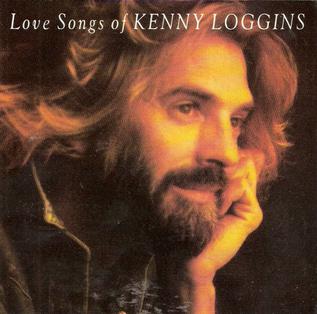


Compilations: Love Songs (1993, did not chart); Yesterday, Today, Tomorrow (1997, US #39); Essential (2002, US #181): Compilation albums are the antithesis of this essay. In the late 20th and early 21st century, CDs were the dominant physical format. By the way, I’m just speaking of the U.S. and U.K. here as CDs are still big in Japan (for real but I digress). I was working in a big mega-music store in NYC during those CD salad days and can confirm that compilations like Yesterday, Today, Tomorrow were the lifeblood of every two-fer sale we ever had. They weren’t for hardcore fans. They were mainly for dabblers who just wanted to bask in the familiar and have something to play in the car or on the boombox at the barbecue or beach. These days (that’d be the digital era), hits compilations are a sonic shortcut for people who just aren’t motivated enough to wanna dig deeper (yet!). And of course, greatest hits collections are the go-to albums when a prominent artist passes (true).
Love Songs has a weird, slightly incoherent track selection. Some former singles, and some deep cuts all gathered under a blanket of “love” despite not all being about the celebratory romantic kind. For example what the fuck are “Conviction Of The Heart’ and “Heart To Heart” doing on it? Yesterday, Today, Tomorrow is a more succint straight-up hits collection with one newbie (at the time), the kick-ass “The Rest Of Your Life” which was meant as a taster for the then forthcoming The Unimaginable Life album. Essential is a pretty extensive overview and features nearly every single including the soundtrack stuff as well as Loggins and Messina tracks. As such, this is the compilation most deserving of recommendation.
There’s never been an official KL box set with all the singles plus, more excitingly, rarities or previously unreleased stuff. None of the studio albums have been given the true double-disc deluxe treatment either. Here’s hoping someone, somewhere will get crackin’ on this ASAP.
Side Project Sidebar!: KL also moonlighted for a bit as part of a trio called Blue Sky Riders who have kicked out three albums since uniting in 2013. They are country-flavored and just okay. KL admitted in his memoir that the experience of being “part of the band” wasn’t as fulfilling and fun as he had hoped it would be (understatement). In 2020, KL collaborated/sang lead on a new version of the old BSR track, “Why Not” with ukulele player Jake Shimabukuro. It has been streamed millions of times, meaning it charmed many humans despite not being one of KL’s finest works ( it isn’t even worth inclusion in a hypothetical top 100 KL songs of all-time list). But it is popular, so here we are doin’ the right thing and acknowledging it.
Kids ‘n’ Christmas Albums




Return To Pooh Corner (1994, US #65 ); More Songs From Pooh Corner ( 2000, did not chart); All Join In (2009, did not chart); December (1998, US #148): Return To Pooh Corner is full of sentimental Gen X faves (weird but true). There’s “Pure Imagination”, “Rainbow Connection” and “The Last Unicorn”. There’s a little Lennon (“Love”) as well Rickie Lee Jones’s classic “The Horses” (plus a mixed bag of traditional tunes and kid-themed Loggins originals). It’s billed as “music for parents and children to enjoy together”, but actually makes for a pretty chill listen whether its being shared with the squirts or not (though I could do without “To-Ra-Loo-Ra”. Yeah, I said it). Return To Pooh Corner proved to be immensely popular and ultimately went platinum making it one of the best-selling albums of KL’s career.
The song choices on KL”s other two kid-themed releases, More Songs From Pooh Corner and All Join In are far less savvy and compelling than those on Return. The former is heavy on songs from modern-day, mostly Disney-generated kid’s movies (“Tarzan”, “Babe” etc.), the latter is a goofy party record of nerdy ’60s classic rock (Traffic, Donovan) and newer quirk (tunes by Mika and Feist) which I’m making sound more fun to listen to than it actually is. Return is by far the best of the kid-themed offerings.
We Need To Talk About The Album Covers: If you are reading this, there’s a good chance you like Kenny Loggins and maybe even feel a little protective of him. When I first saw the cover of KL’s first kids album, Return To Pooh Corner upon its release with its purple moon, shawl, denim domination, and distractingly small over-the-shoulder unicorn, I cringed. I mean I get it, it’s an album of music for children, it’s outside needed to reflect and convey the whimsical and heartwarming theme of the music within. But I knew there was no way I could keep others from laughing at it. Still, as bad as that cover was, it didn’t come near the visual horror of its follow-up More Songs From Pooh Corner. There’s no need for me to get specific in regard to that one. We can both see it.
Christmas Time Is Here!: There are only two truly must-have Christmas albums in existence: Vince Guaraldi’s A Charlie Brown Christmas (1965) and A Christmas Gift For You from Phil Spector (1963). And okay, honorable mention to the Carpenters’ Christmas Portrait (1978). These LPs are so gorgeous and have set the Xmas music bar so impossibly high, that the best anyone can do at this point is make something pleasant and just plain okay which is what December ultimately is. The LP invariably features a few standards including a couple of songs that some of us would be okay with never hearing again—talking to you “White Christmas” and “The Christmas Song (Chestnuts Freakin’ Roasting). But KL also throws a couple of cool curves along the way by not only incorporating several Christmas-themed originals but by including nice versions of two of the best melancholy seasonal songs ever: the aforementioned Vince Guaraldi’s “Christmas Time Is Here” and the ethereal 1982 theme from animated classic The Snowman, “Walking In The Air”.
Bonus: A Quick Look at Loggins & Messina


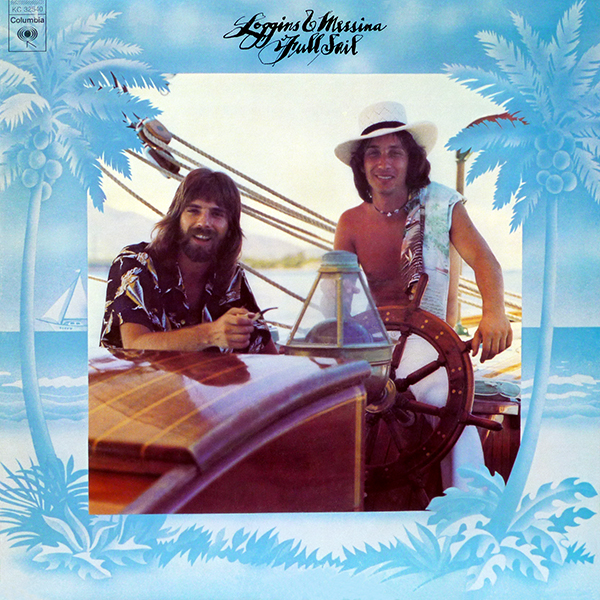



Between 1971 and 1976, Loggins & Messina released six studio albums. While none of them could be classified as a must-have, all-time great LP, there are some seriously memorable songs to be had within them. And they are not necessarily the hits or best-known tracks. The duo’s first album Sittin’ In (1971, US #70) is home to evergreen softie classics “Danny’s Song” and “House At Pooh Corner” but gotta offer a firm nod of approval for the album’s closing track. “Rock and Roll Mood” opens on a bed of whiskey-soaked piano and explodes once it hits the bridge, at which point young KL stretches out and positively belts to fabulous effect.
The album that followed, Loggins And Messina (1972, US #16) is home to both the goofy and, okay, grating top 5 hit “Your Mama Don’t Dance”, and long-term live-fave “Angry Eyes”. It also features one of L&M’s true deep-cut classics; the piano pop mini-epic with a massive melodic hammer of a bridge, “Til The Ends Meet” which, fun fact, is about KL courting his first wife and future songwriting partner Eva Ein.
While the Full Sail LP (1973, US #10) stars treacly snuggle-bug “A Love Song”, its main claim to fame is its actual album cover showing Loggins & Messina “sailing” which served as partial inspiration for the future term, and concept of “Yacht Rock”.
Mother Lode (1974, US #8) has two supremely gorgeous under-the-radar residents: summery, bittersweet “Brighter Days” which features some mighty handsome mandolin from Messina, and “Fever Dream”, an ethereal, windblown beauty KL co-wrote with singer-songwriter Maury Muehleisen (who died in the same plane crash as Jim Croce in 1973).
The duo’s fifth album So Fine (1975, US #21), features covers of songs from the ’50s and ’60s that L & M had loved in their youth…or at least Messina did. KL is not crazy about this album (being kind here because, in his Still Alright memoir, it sounds like he low-grade hates it). Put simply, it’s an accomplished novelty that fulfilled a contractual obligation. The final studio LP Native Sons (1976, US #16) ended things in a fizzly, faceless fashion though it has one sorta standout track, the flute-driven “Peacemaker” which hints at some of the sonic textures KL went on to explore in his solo excursions.
There are also three (!) L&M live albums. The first, On Stage (1974, US #5) features fab acoustic charmer “You Could Break My Heart” which didn’t appear on any of the studio releases (p.s. Listen on headphones to hear an actual audience spat featuring an audible “fuck you asshole” during the first verse, fun!). There’s actually a lot to be charmed by on the LP, including a crazy 21-minute version of “Vahevala” where following the standard four-minute song, L&M and the band slide into a lengthy and entertainingly peculiar jam/soundscape that sounds like what can only be described as “Tropical Grateful Dead Krautrock”. This weirdly compelling track is one of the many reasons On Stage outshines the other two live releases Finale (1977, US #83) and latter-day reunion Live: Sittin’ In Again at the Santa Barbara Bowl (2005, did not chart), both of which are mostly for sentimental completists.
In addition, there are four compilations, two of which are worth noting. 2005’s The Best: Sittin’In Again provides a decent overview for the uninitiated and is the most popular L&M album in the streaming world ( though it doesn’t feature rapturous angels “Brighter Days” or “Fever Dream”). The Best Of Friends (1976, US #61) is a simple ten-song hits ‘n’ faves collection and features a glorious denim’n’velour “seventies guy” cover. To this very day, it is the first image that pops into my head whenever I think of Loggins & Messina.
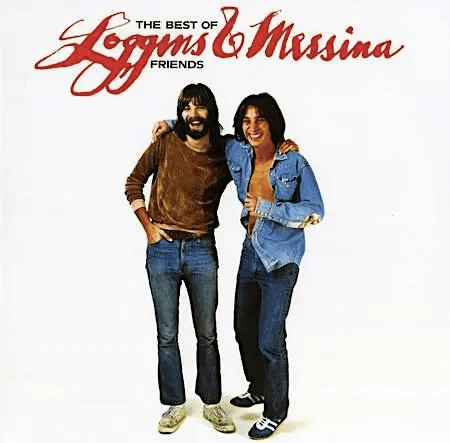
Sure KL’s short-length jeans might seem cool now, but in the ’70s if you dared to wear them to school, you would have been shamed by other kids shouting “flood’s over” at you.
In Conclusion

KL’s official memoir Still Alright is honest and laid back. He sporadically uses the word “fucking” as both an adverb and an adjective which, frankly, I fucking love (ex. “fuckin’ woodpeckers”). He also spits a line of wisdom within it that transcends its context so well, I feel the need to share it. After describing his less-than-stellar audition for Linda Ronstadt’s band in the early ’70s, he offers this small but perfectly formed theory on such scenarios. It is a nugget of true self-awareness and can be applied to most life experiences:
“If I’m not where I belong, I suck”.
Every Kenny Loggins-themed article, review, or interview will first and foremost acknowledge his status as “The Soundtrack King” (naturally). In addition, many of those pieces will talk up his status as a distinguished forefather of Yacht Rock (no gettin’ around it). More often than not they’ll mention Michael McDonald (Soul Brother) and give a nod to KL’s successful foray into kids’ music (can’t be denied).
The tendency to focus on those popular biographical facts is understandable. The studio albums are rarely, if ever, mentioned as singular entities. This is a damn shame, for the most sonically adventurous, melodically transcendent, and emotionally unrestrained Loggins sounds are found exclusively on those solo studio albums. The breeziest, most confessional pop-soul-smoothies. The boldly lengthy, downright proggy epics. The luminous late-night love notes where “the glow from the bathroom down the hall lights a mirror on the wall”. The studio albums showcase Loggins as the freewheeling soft rock wizard he really is. The outrageously successful “Soundtrack King” gets all the attention but that “Albums Guy”? He’s the one that deserves some real celebration⚡️


